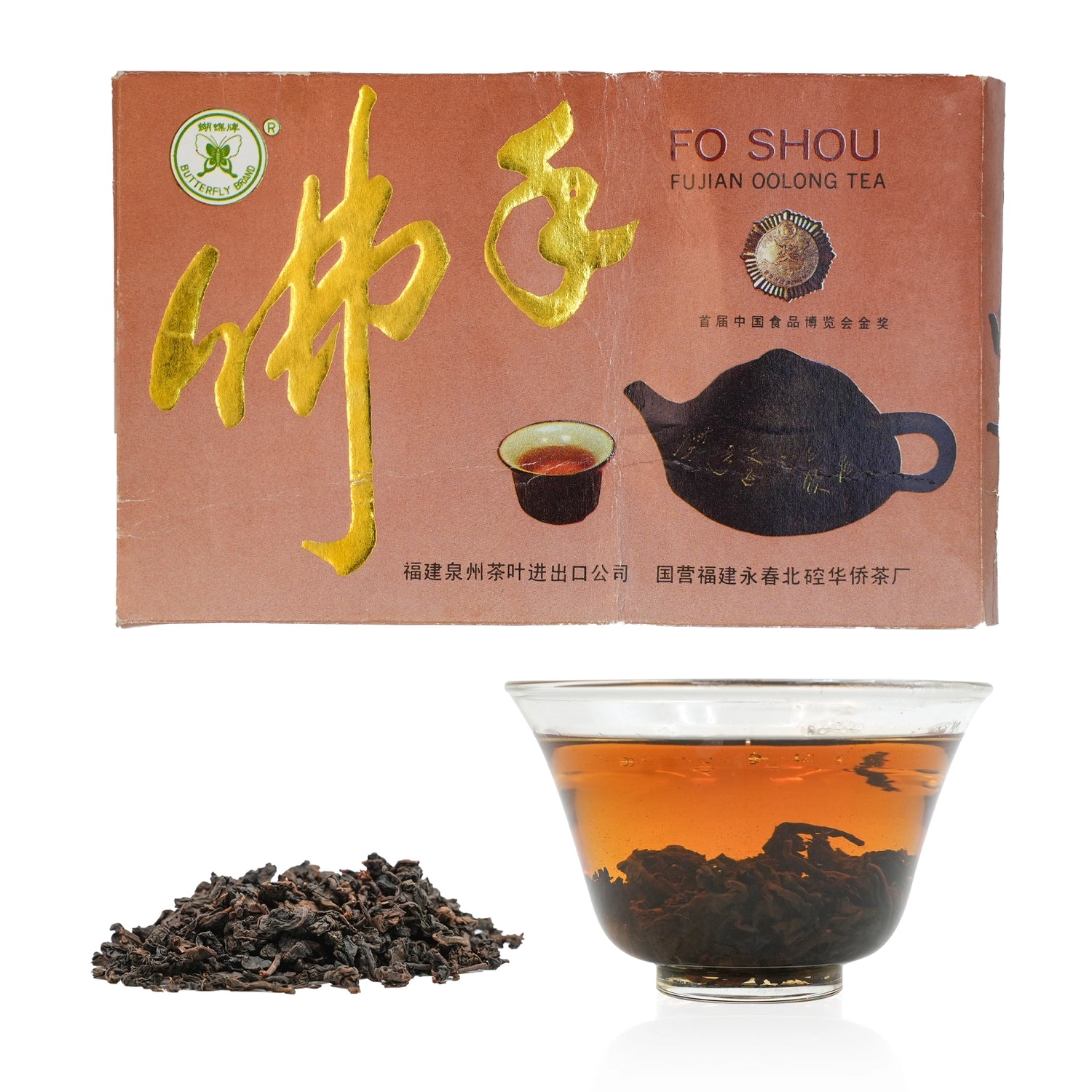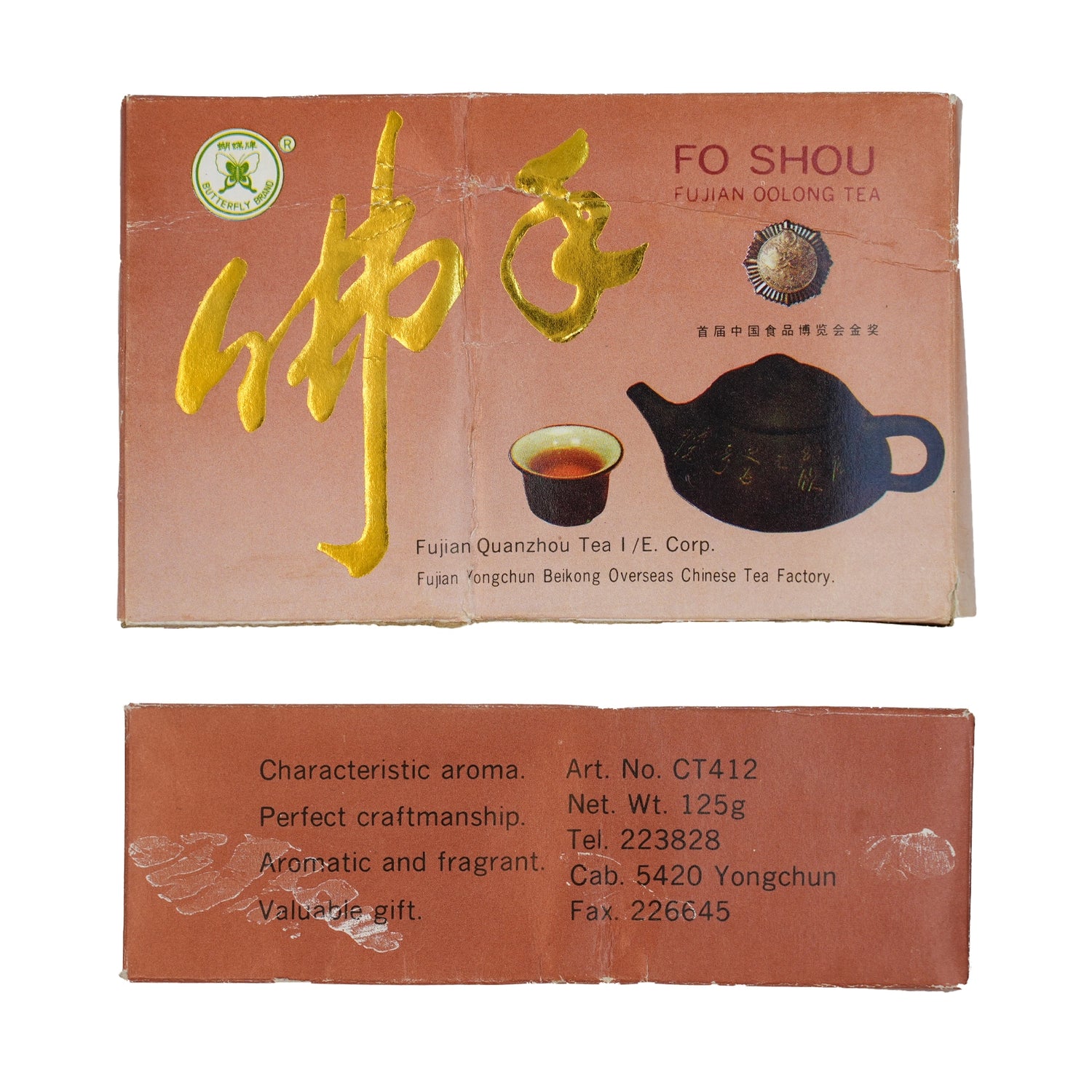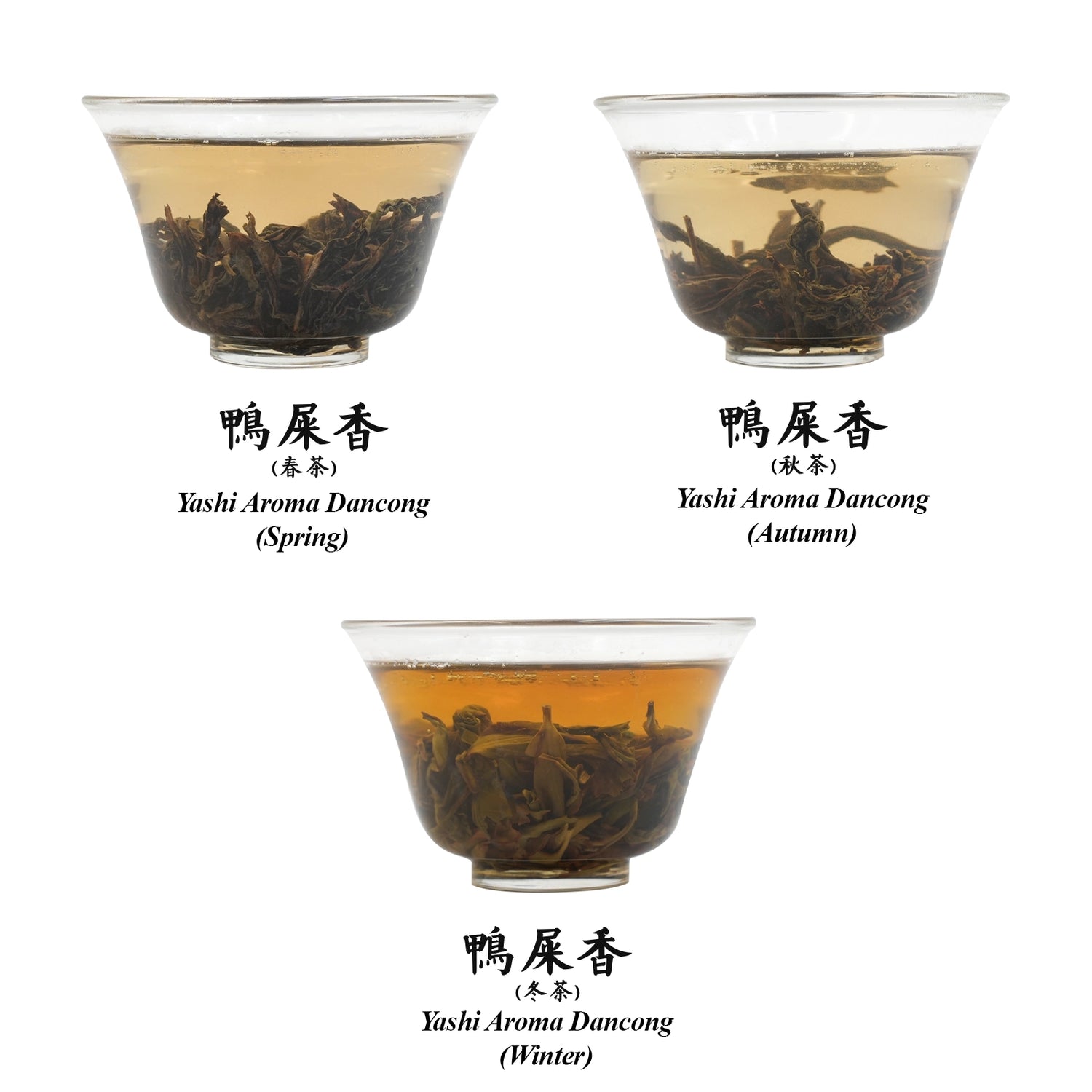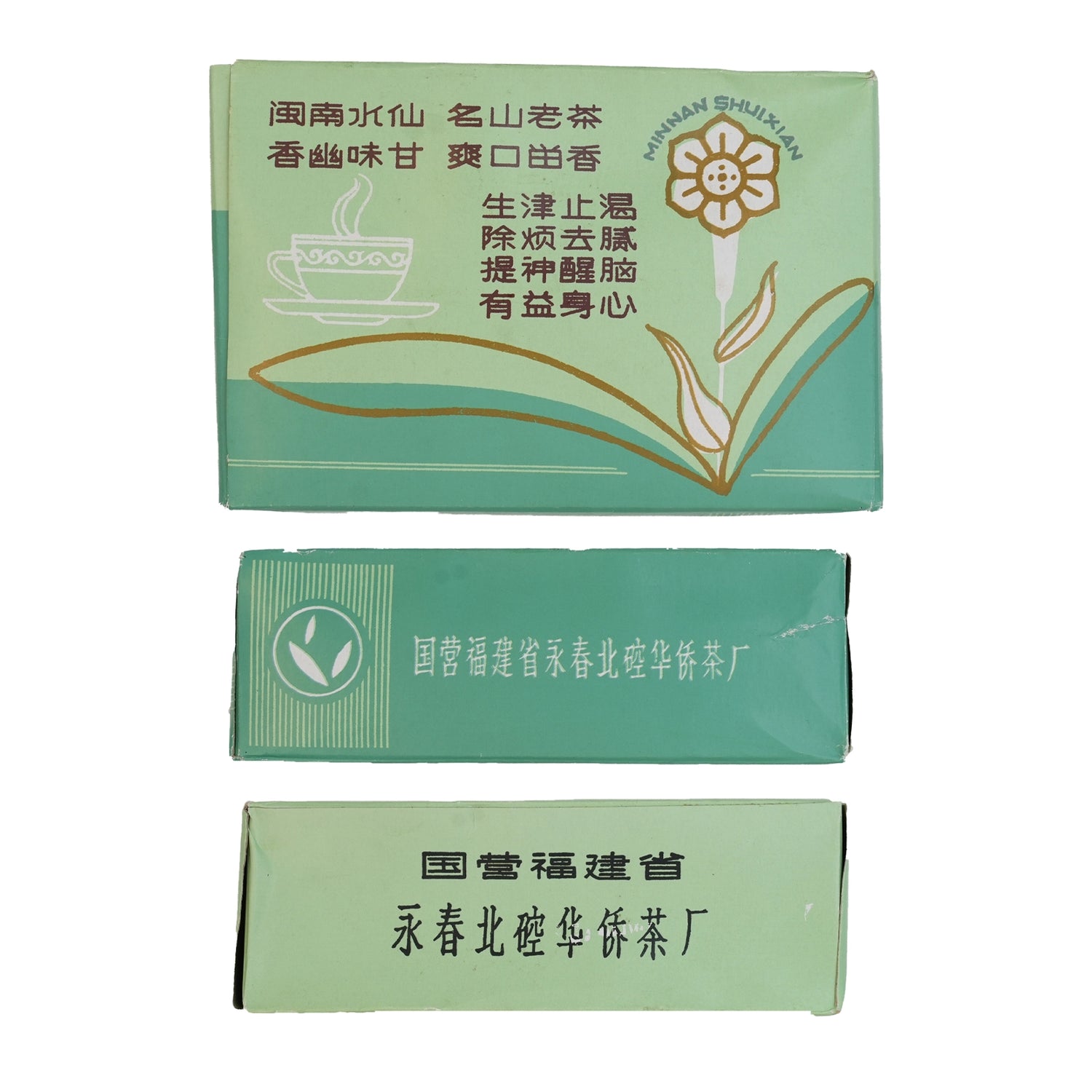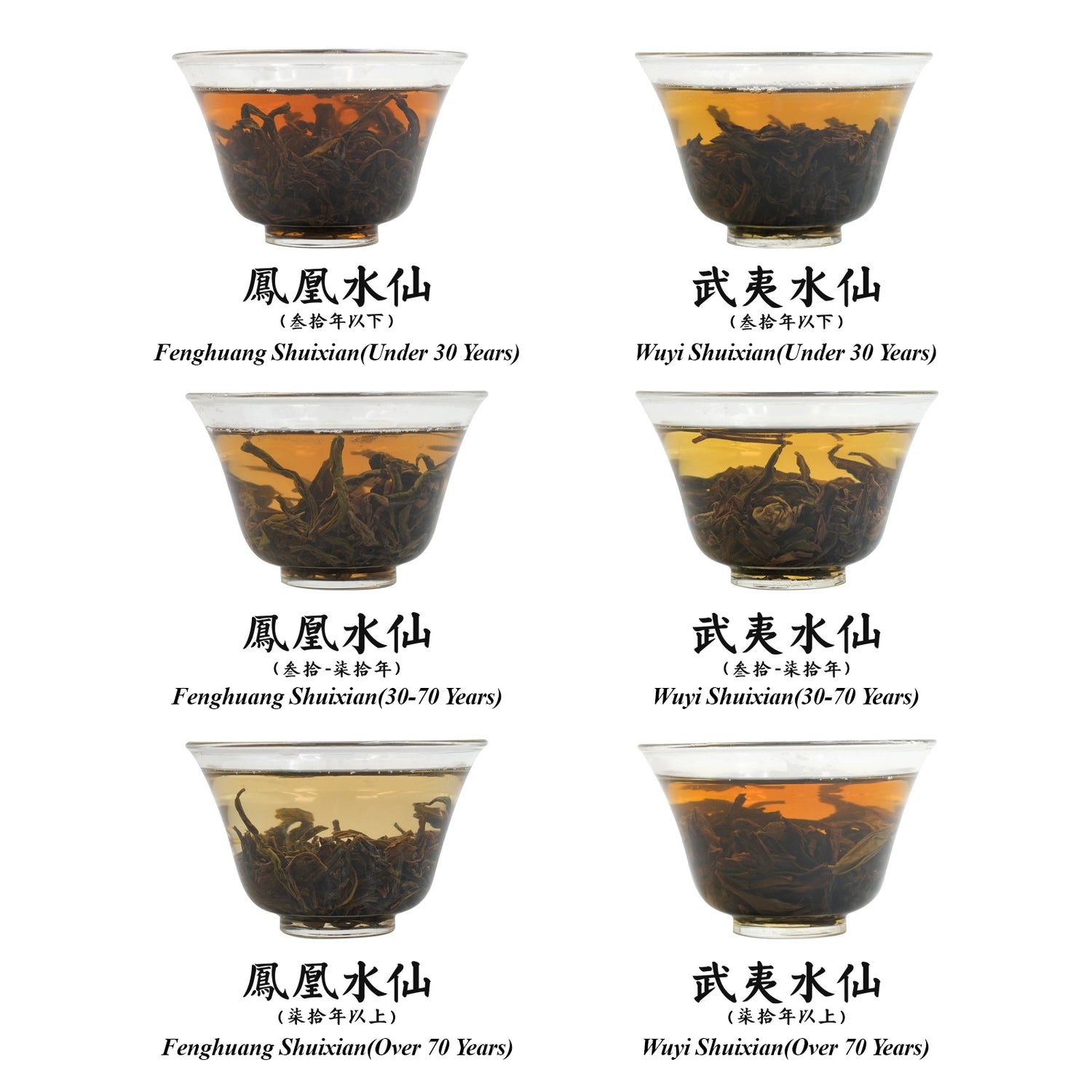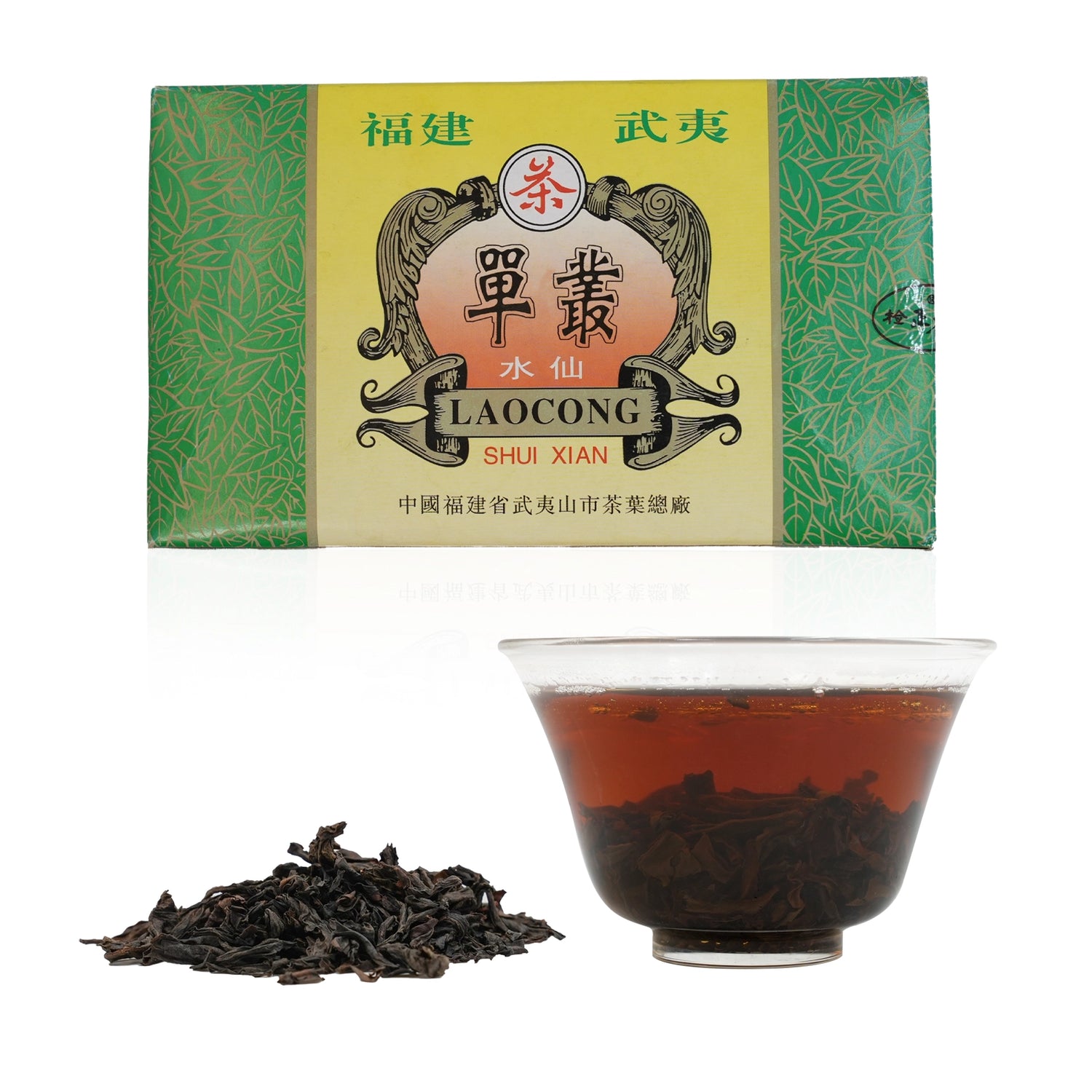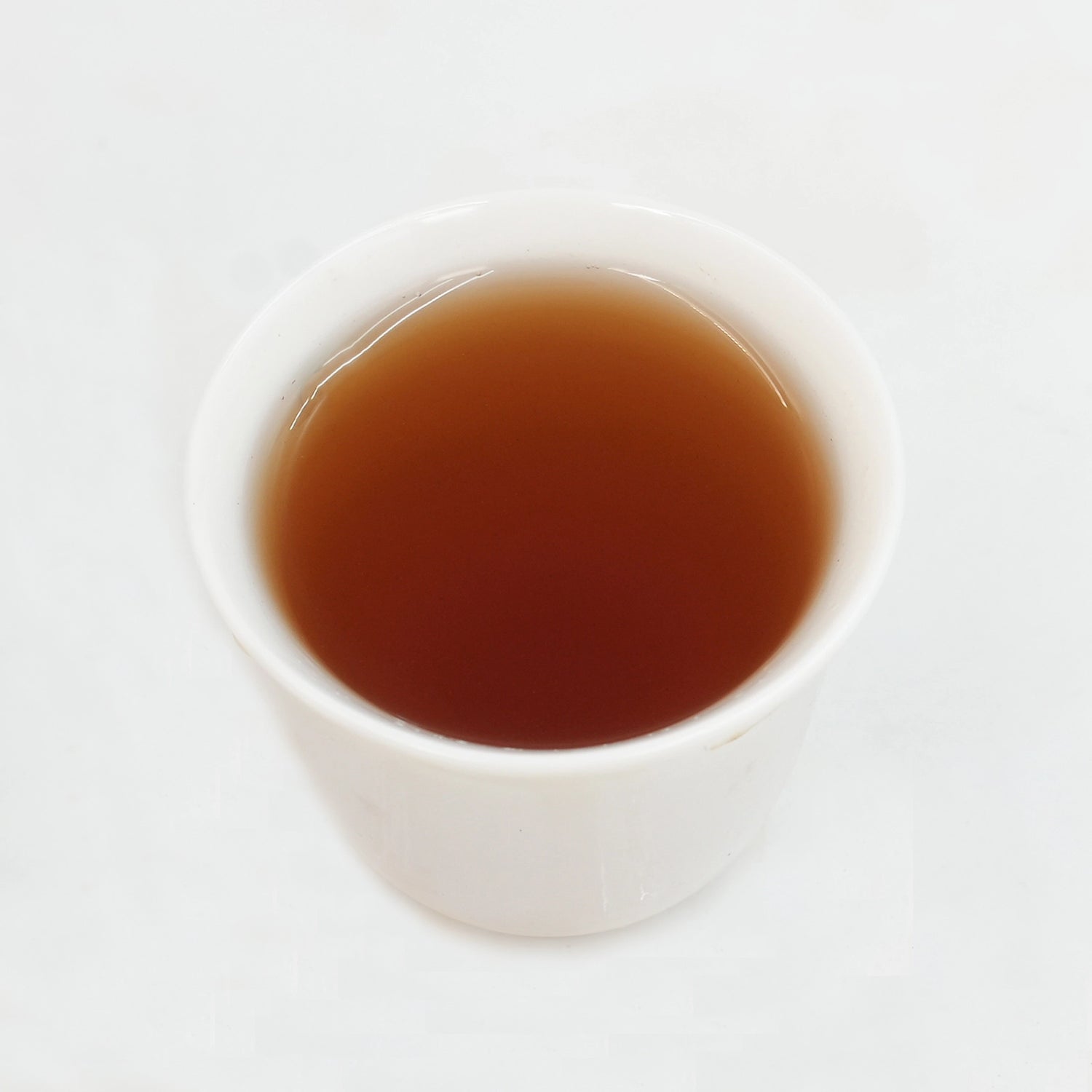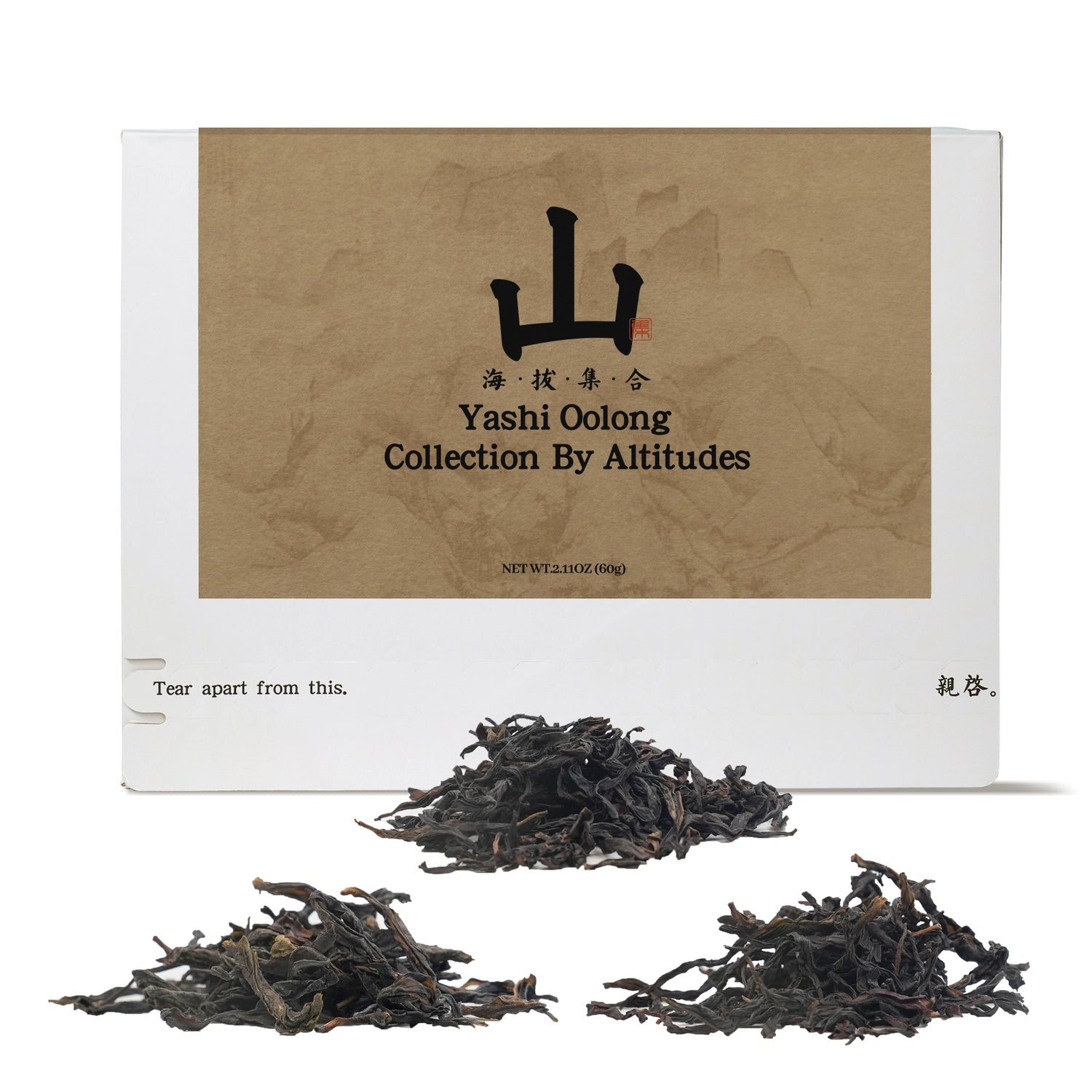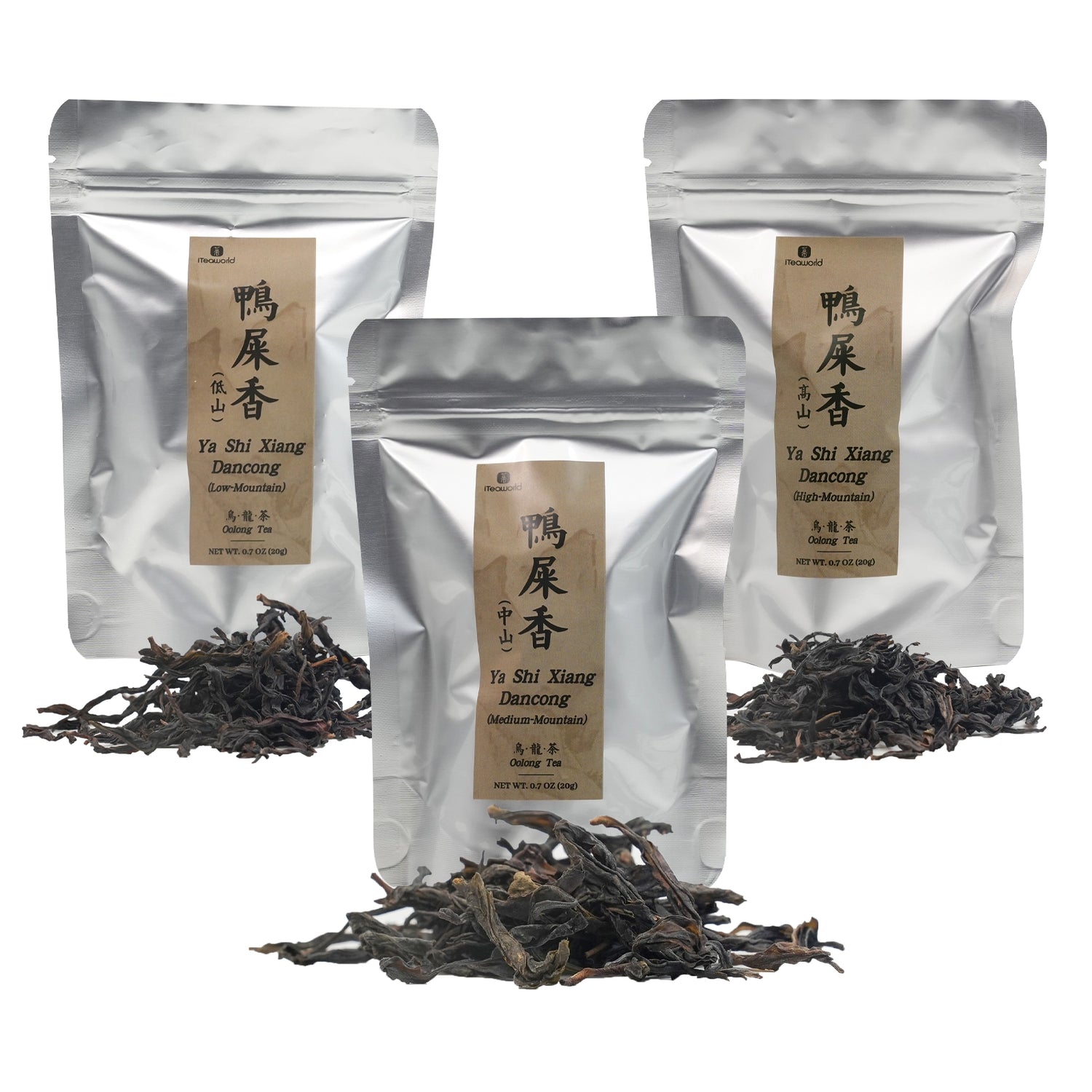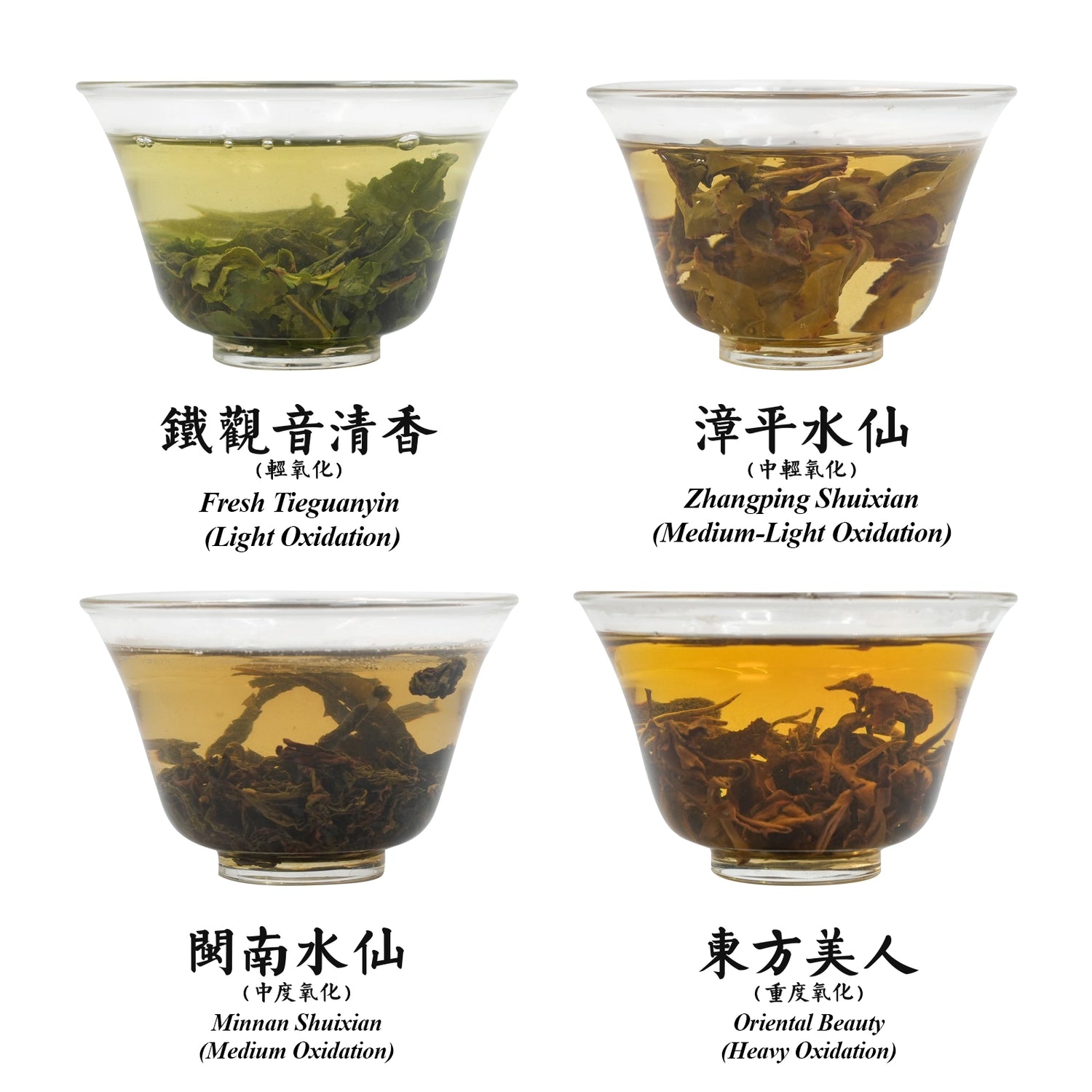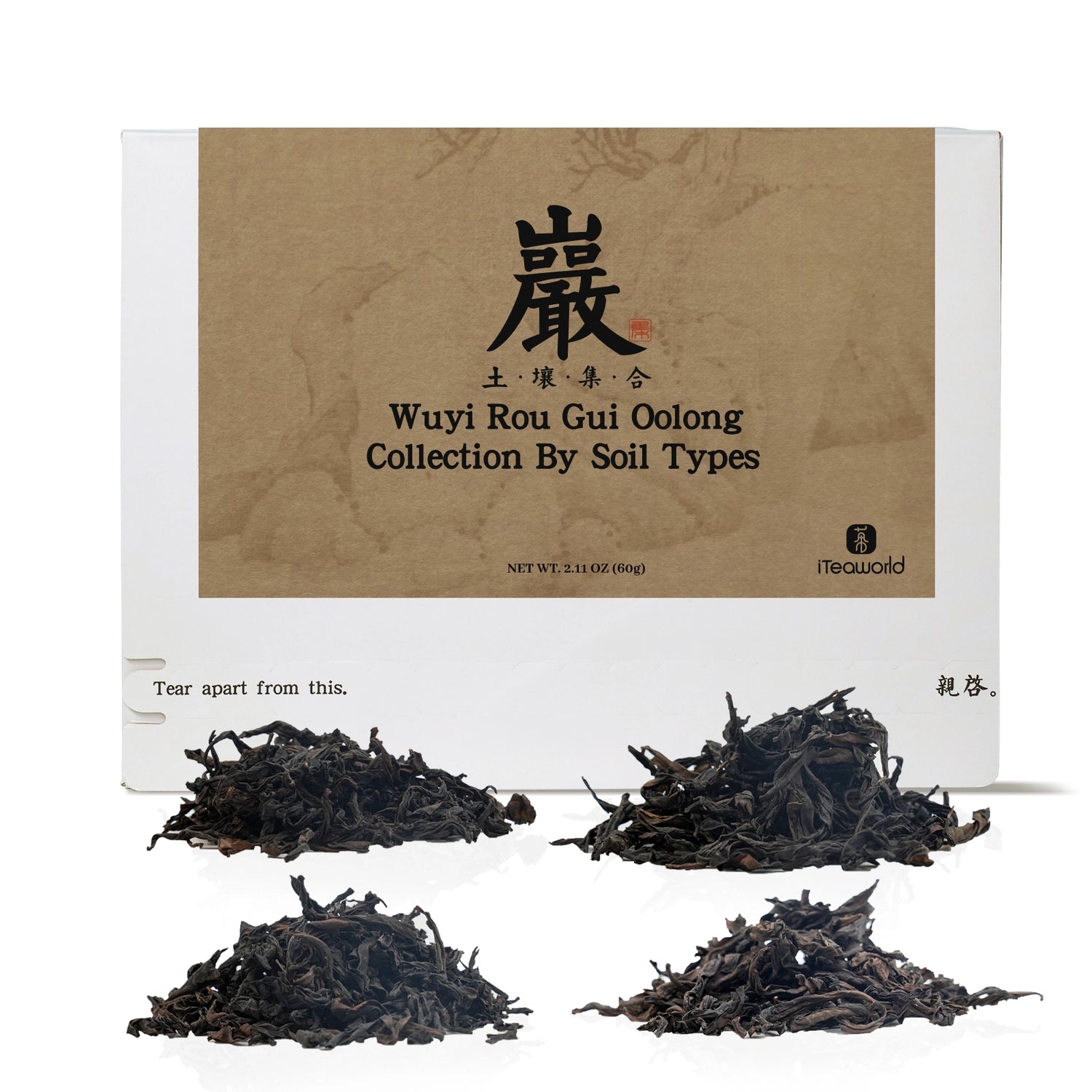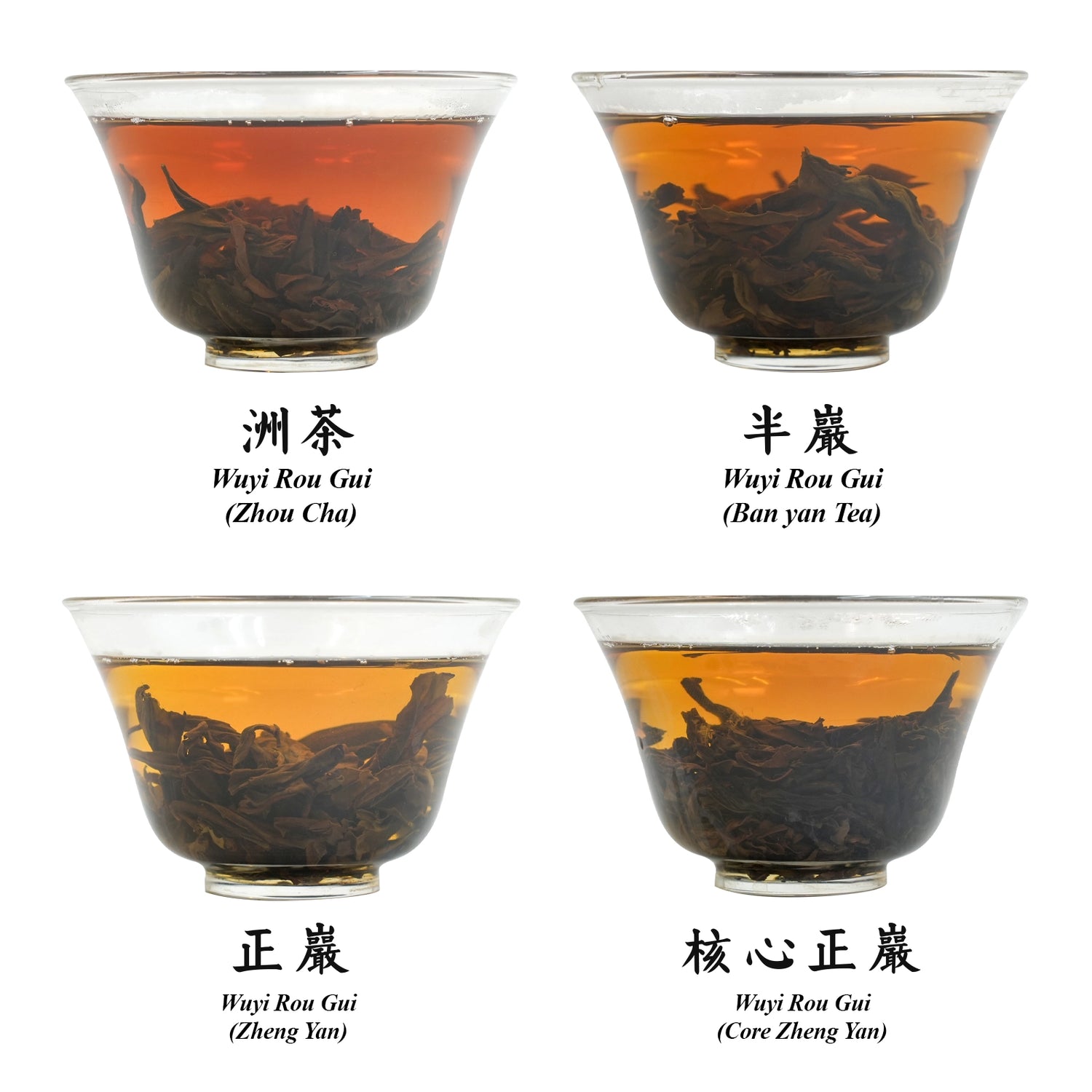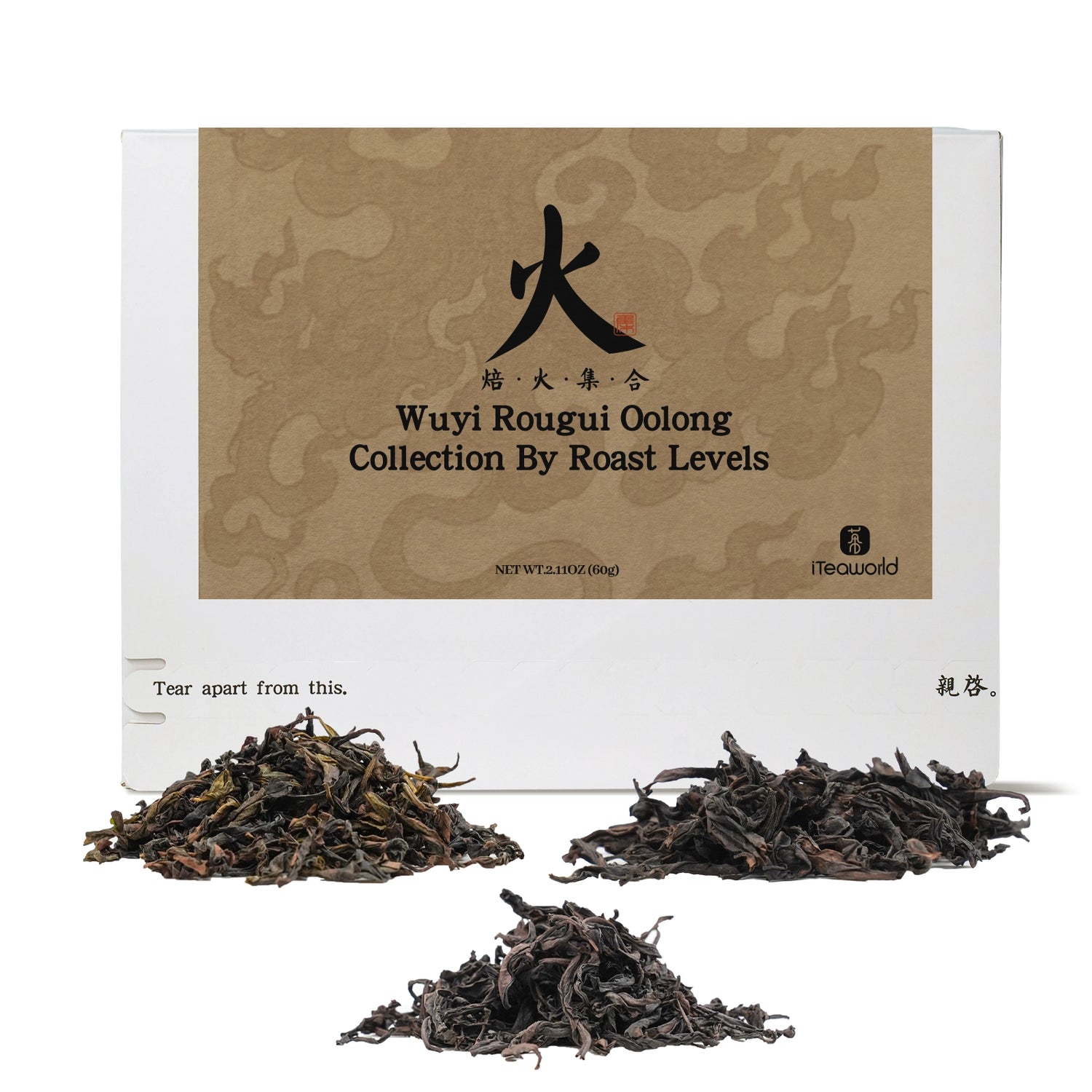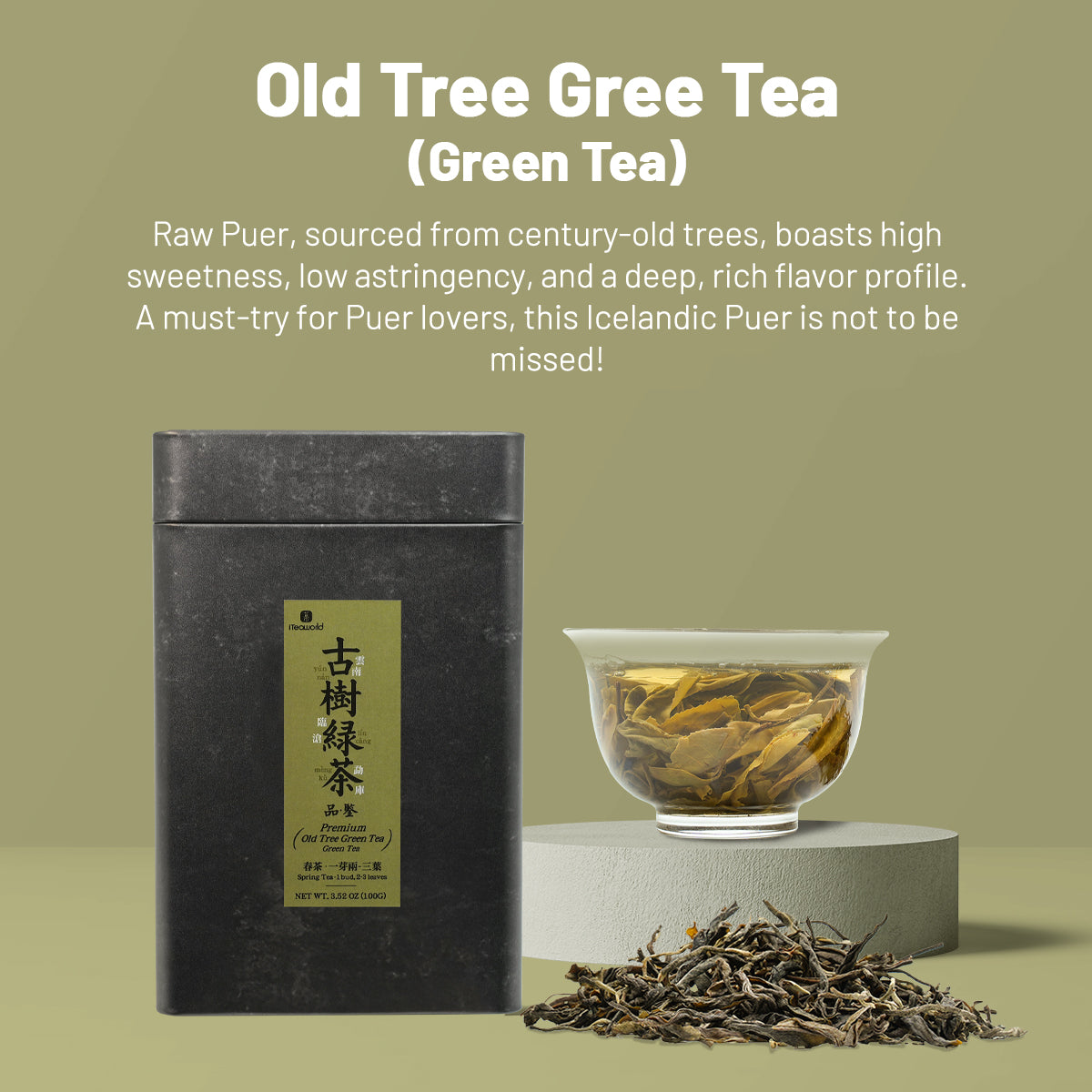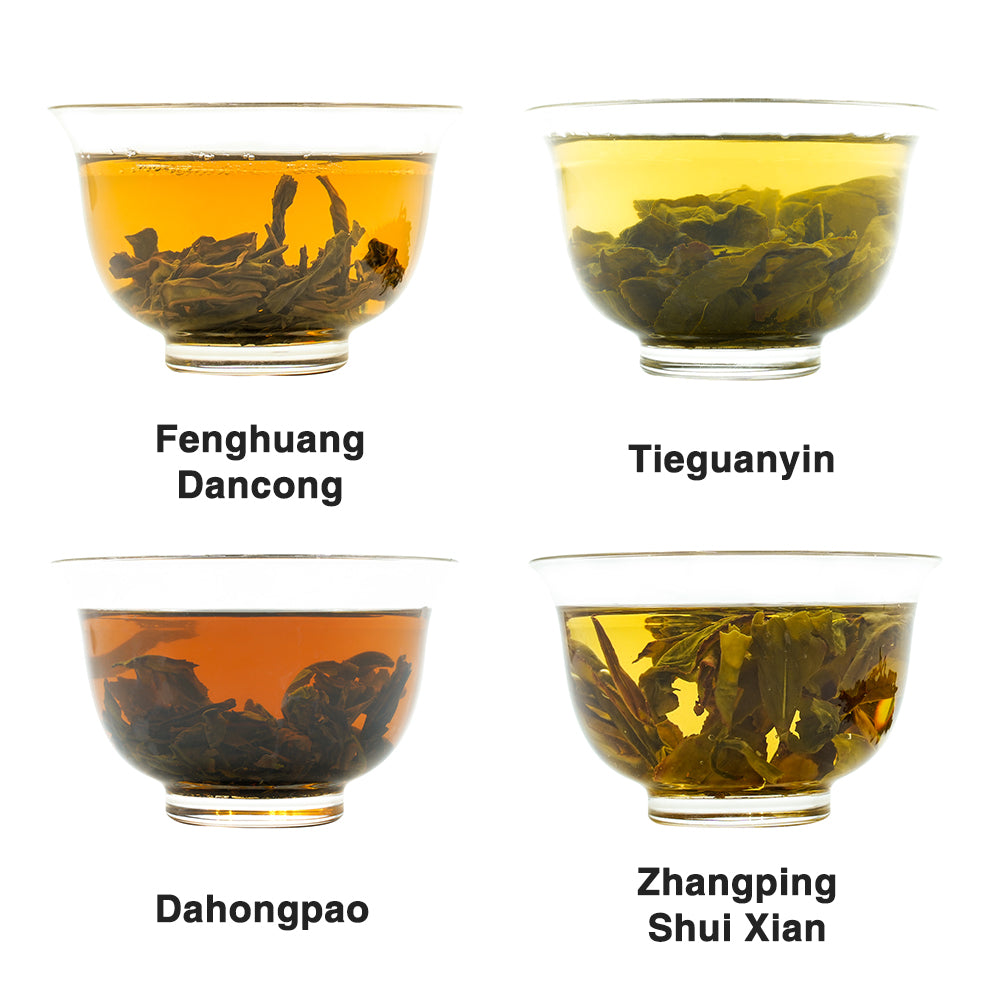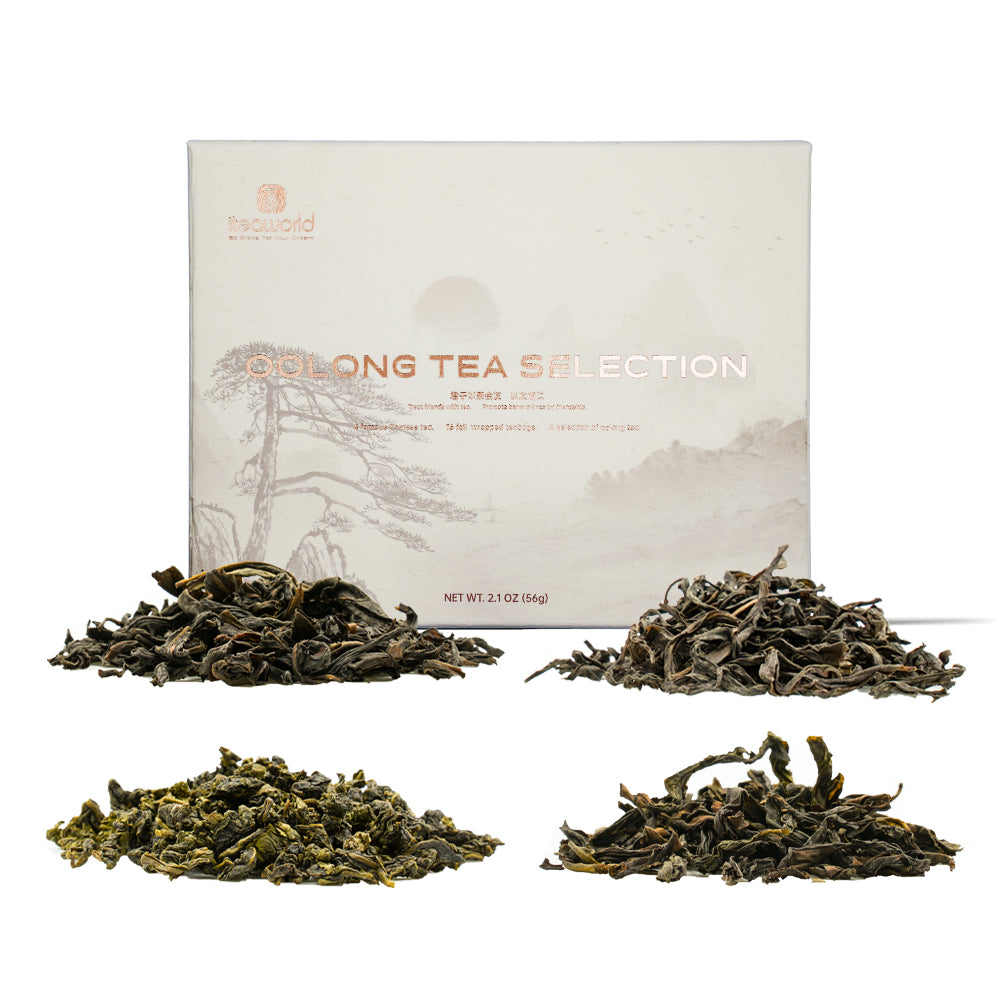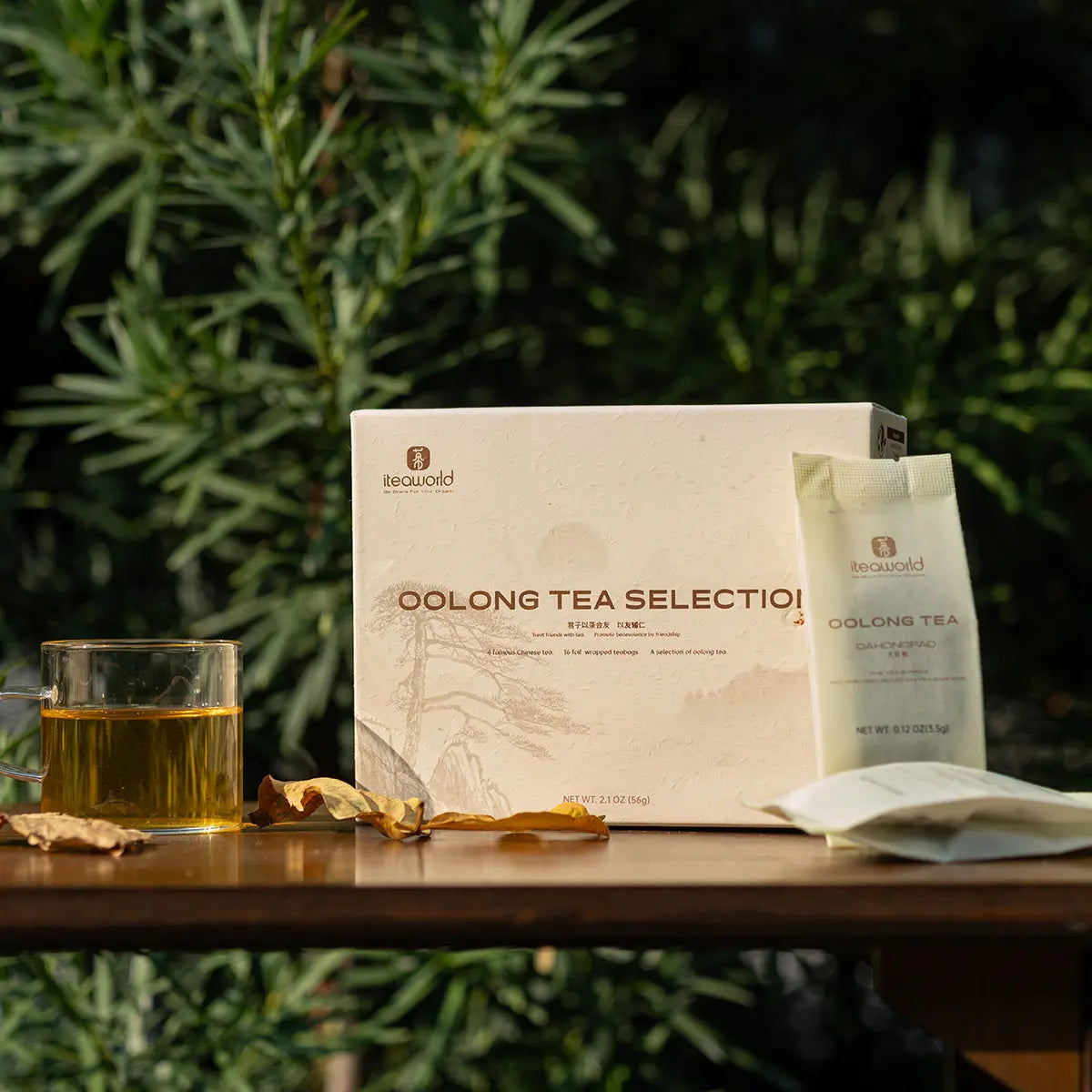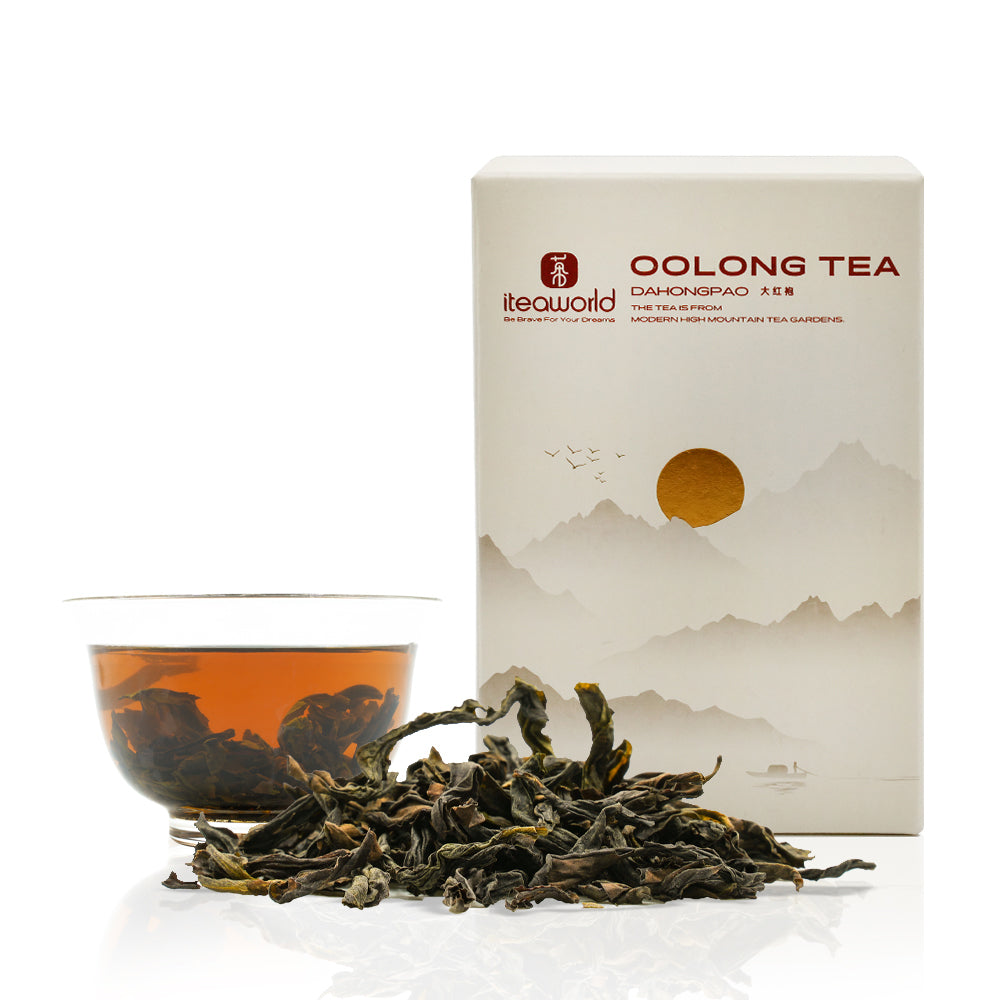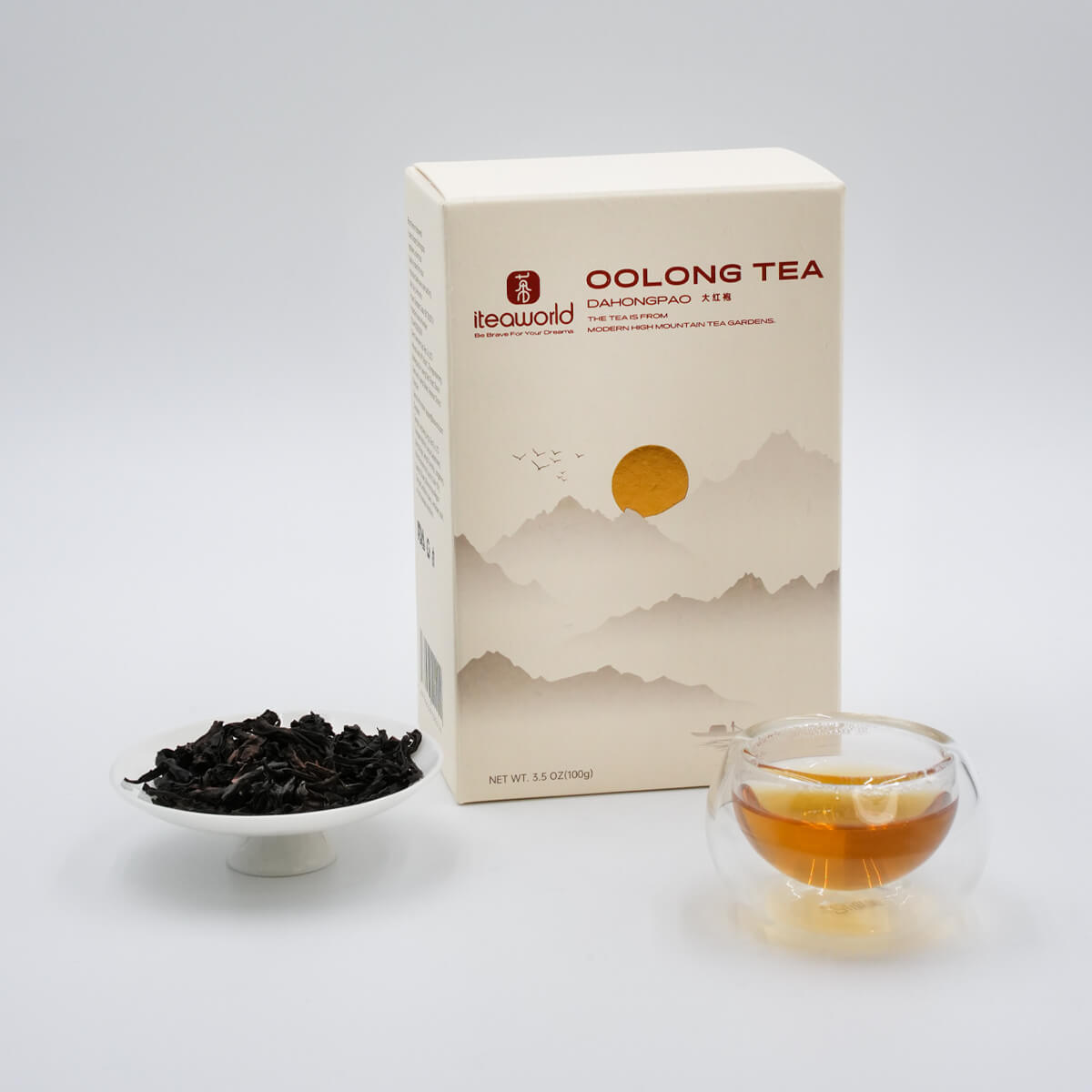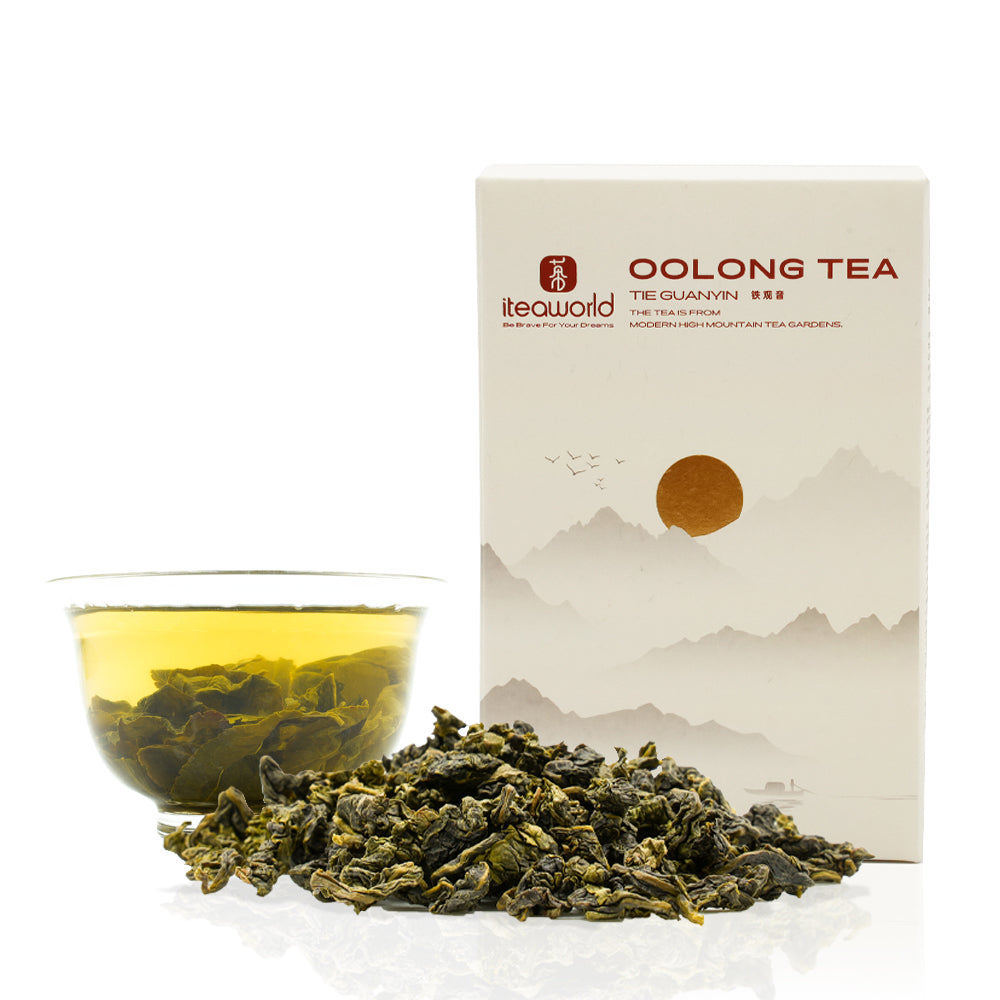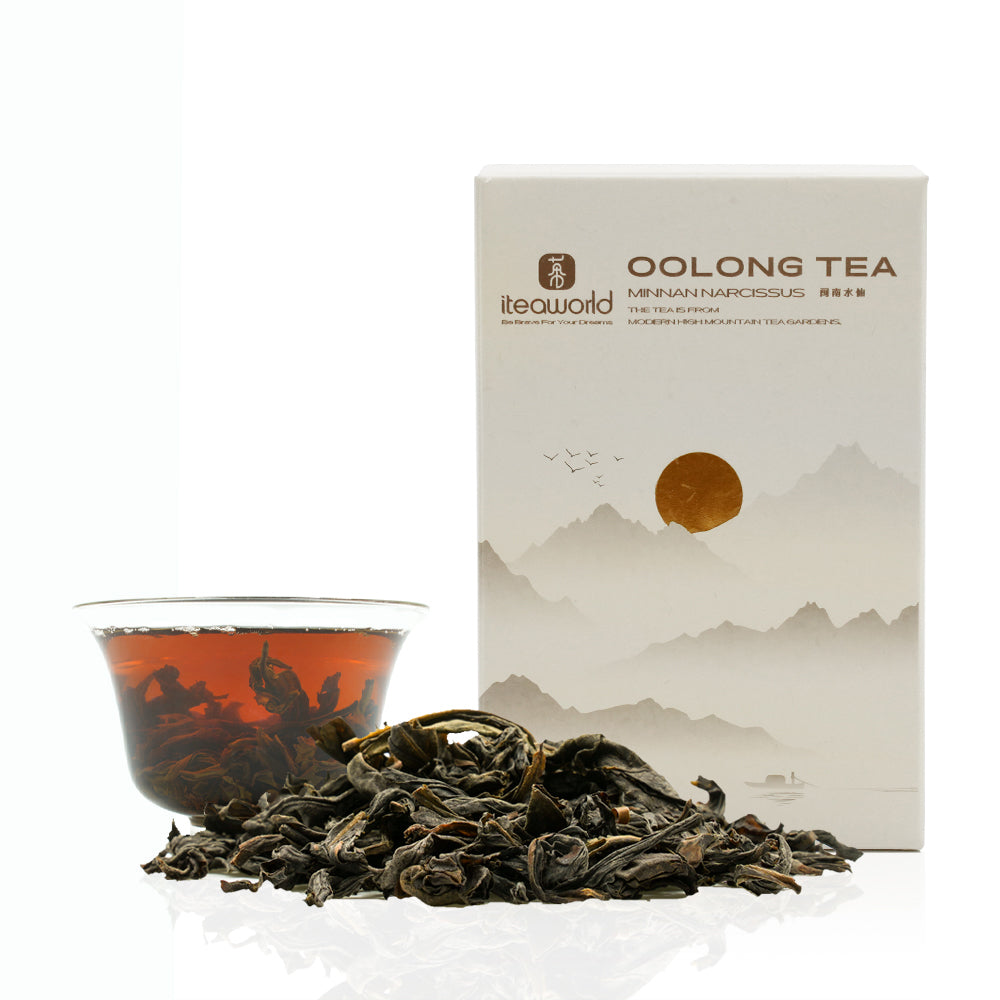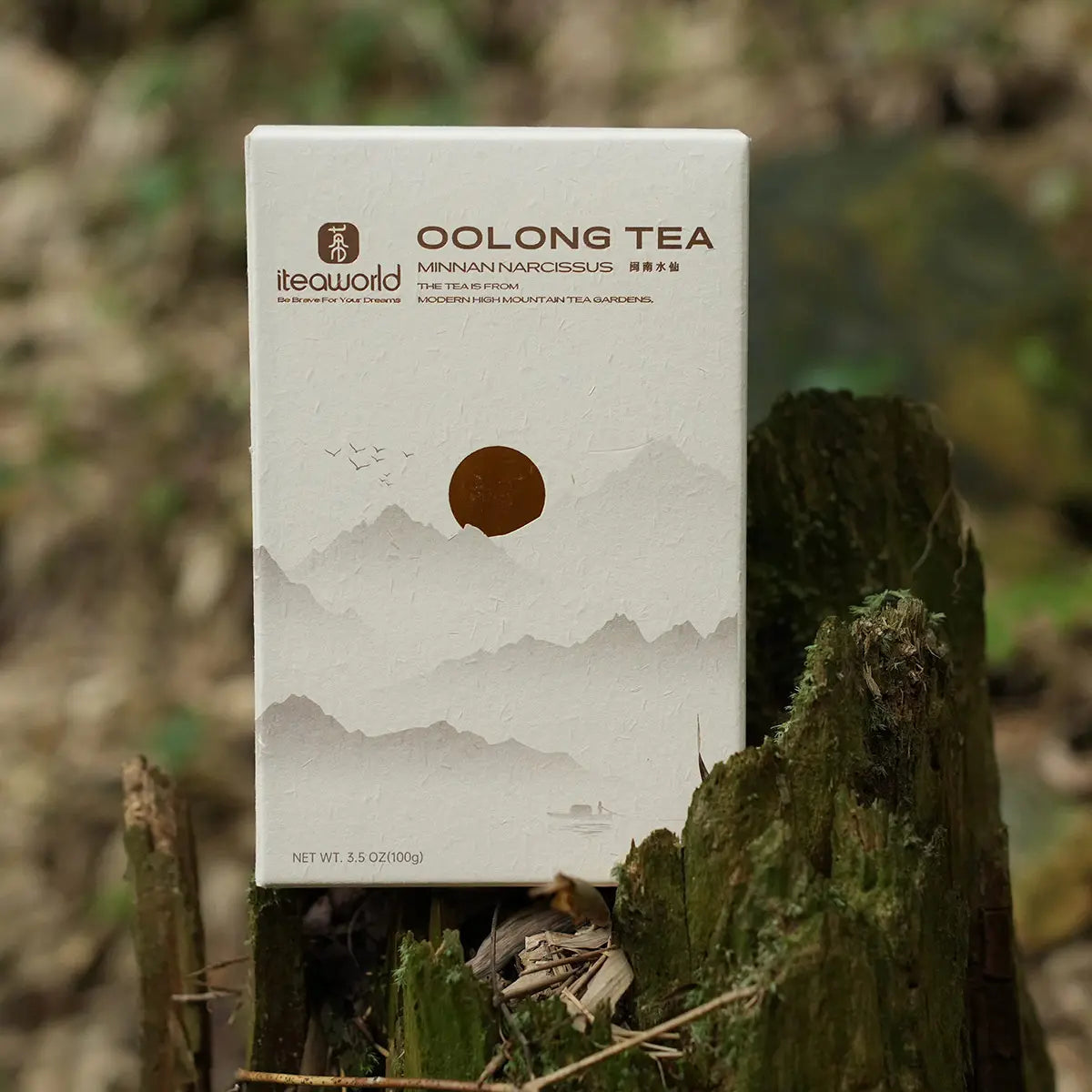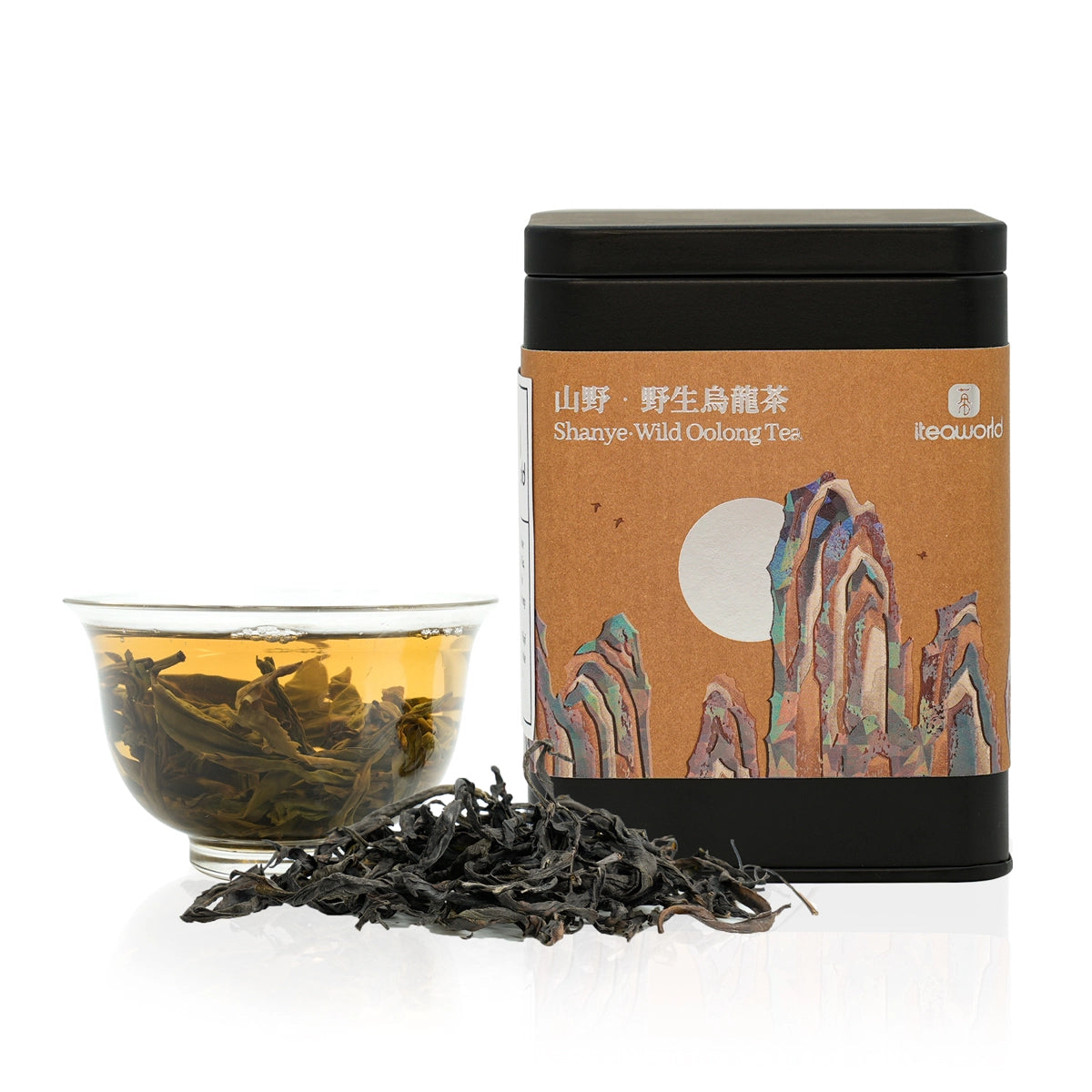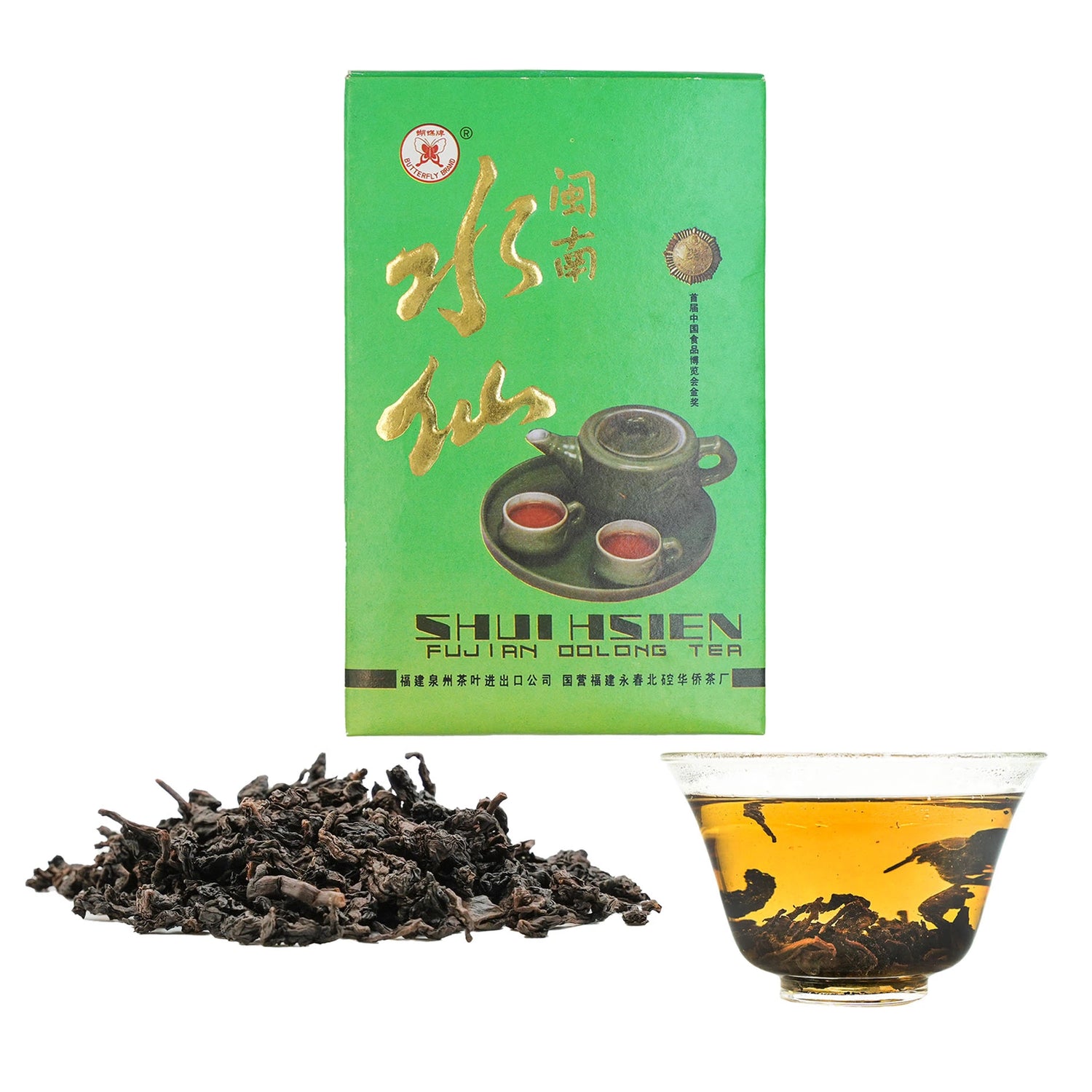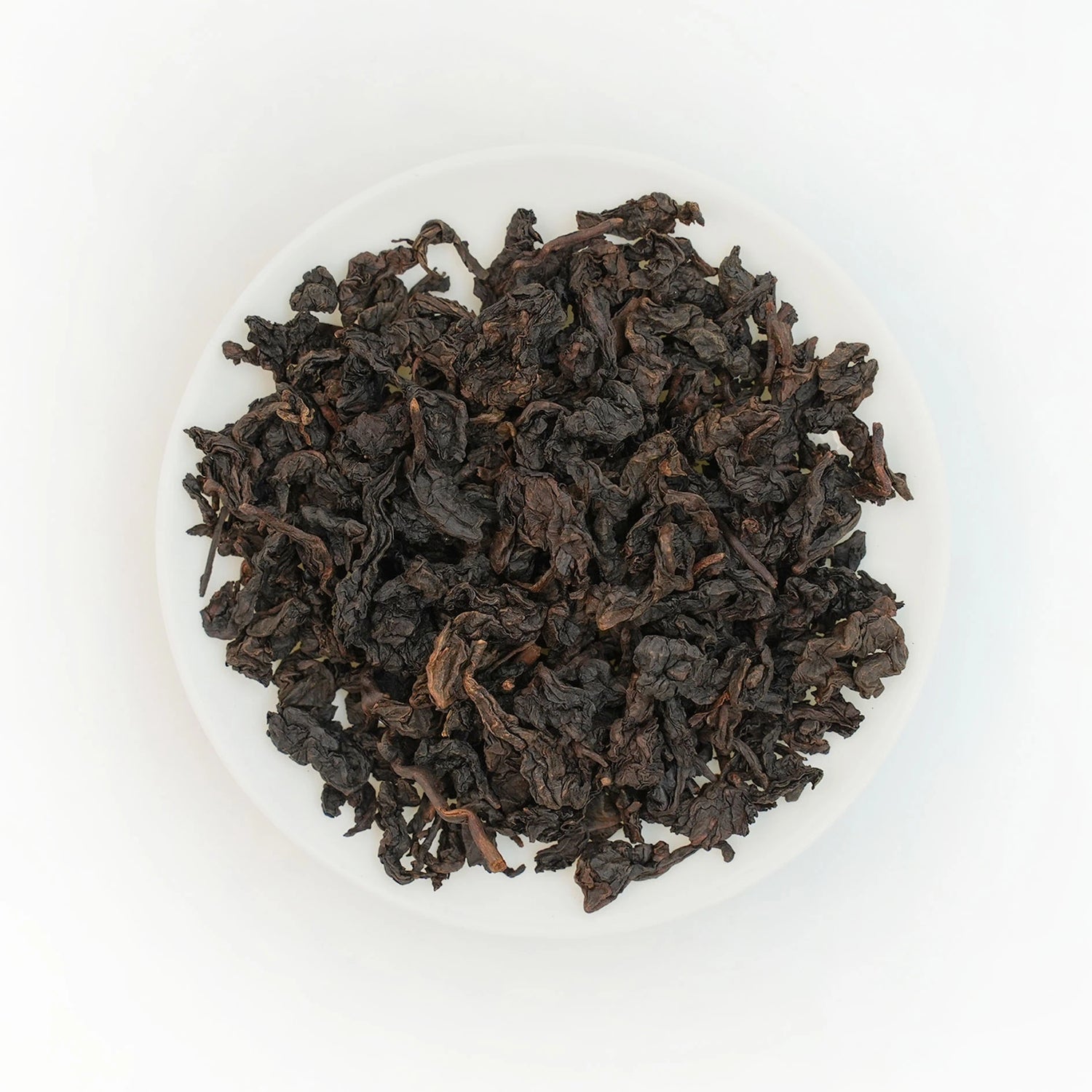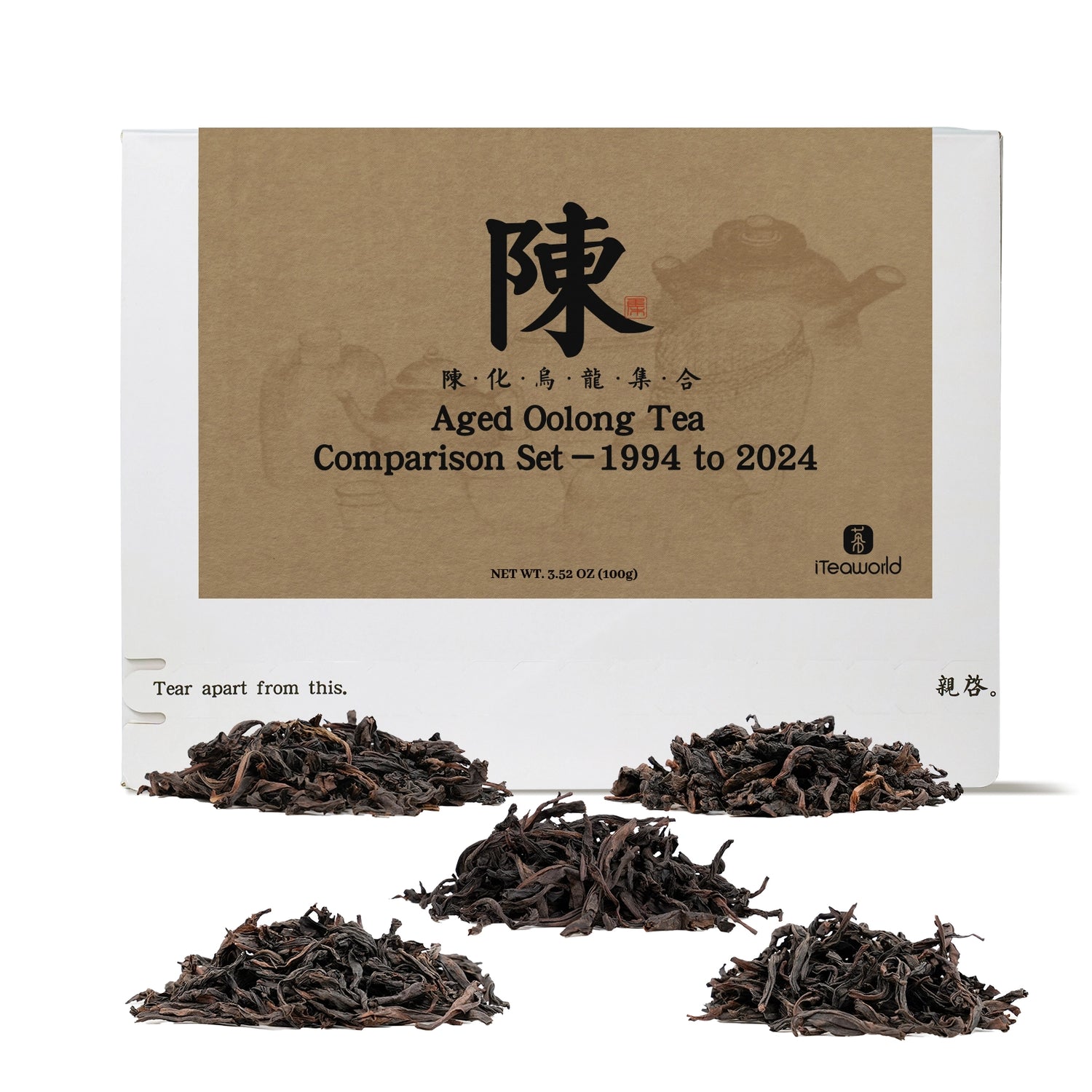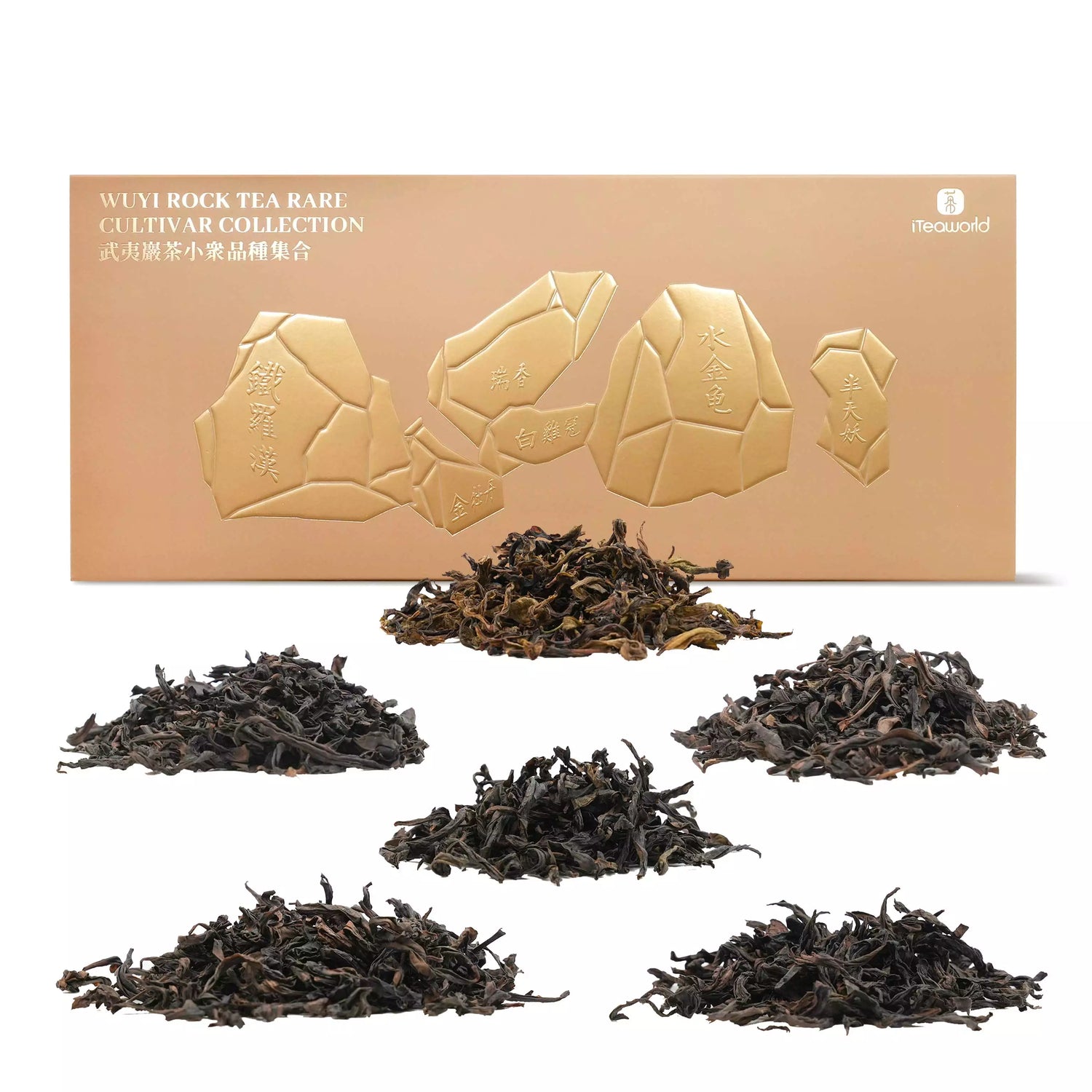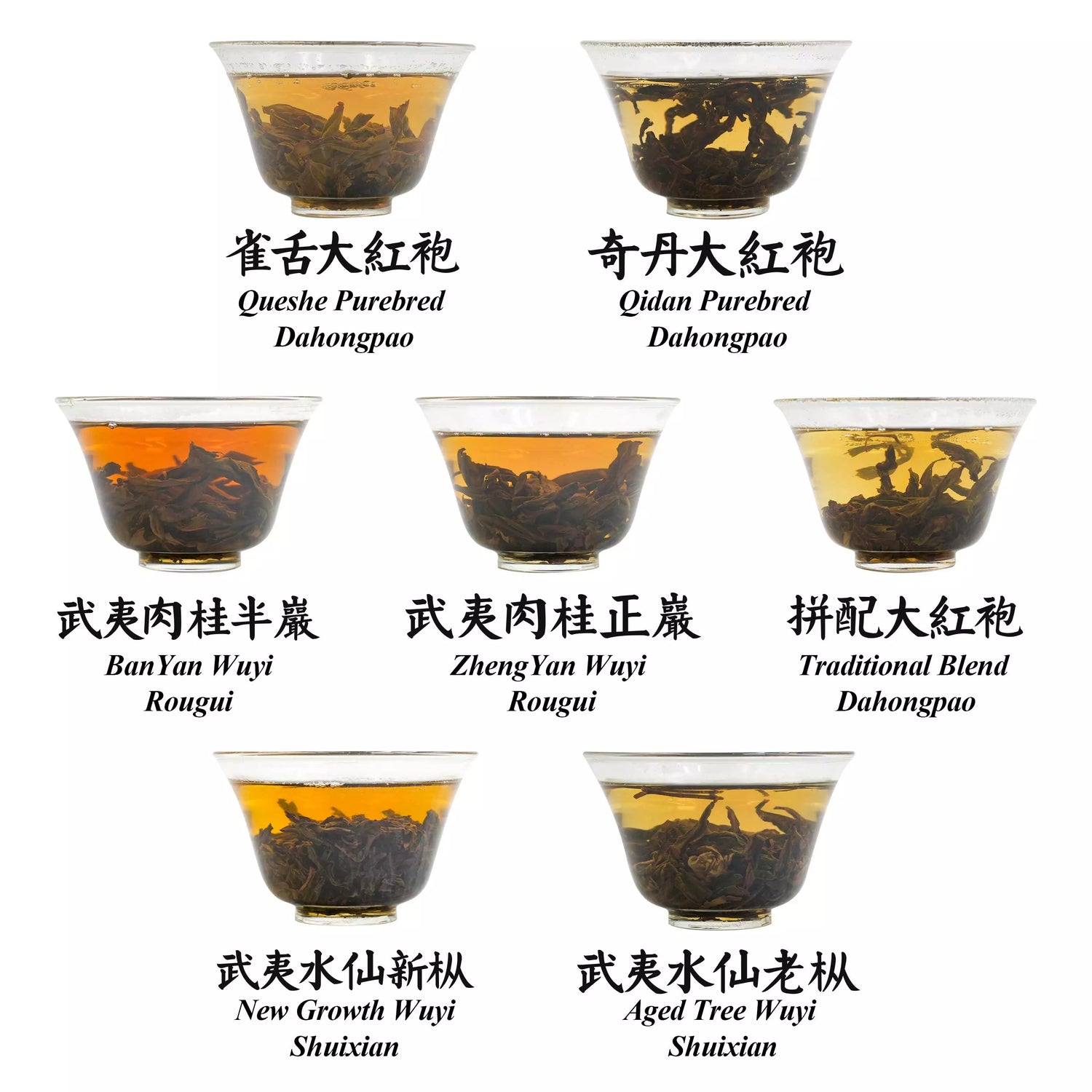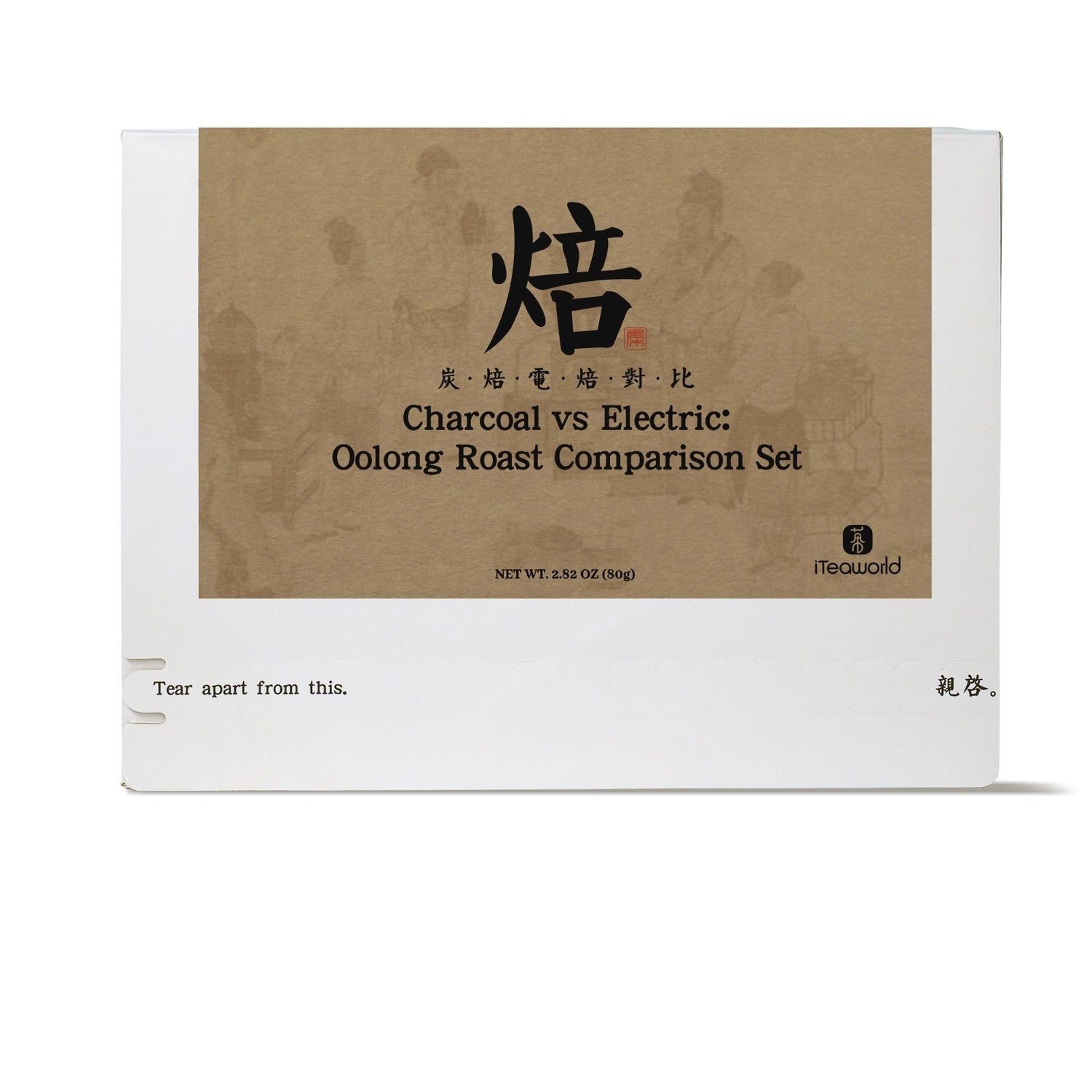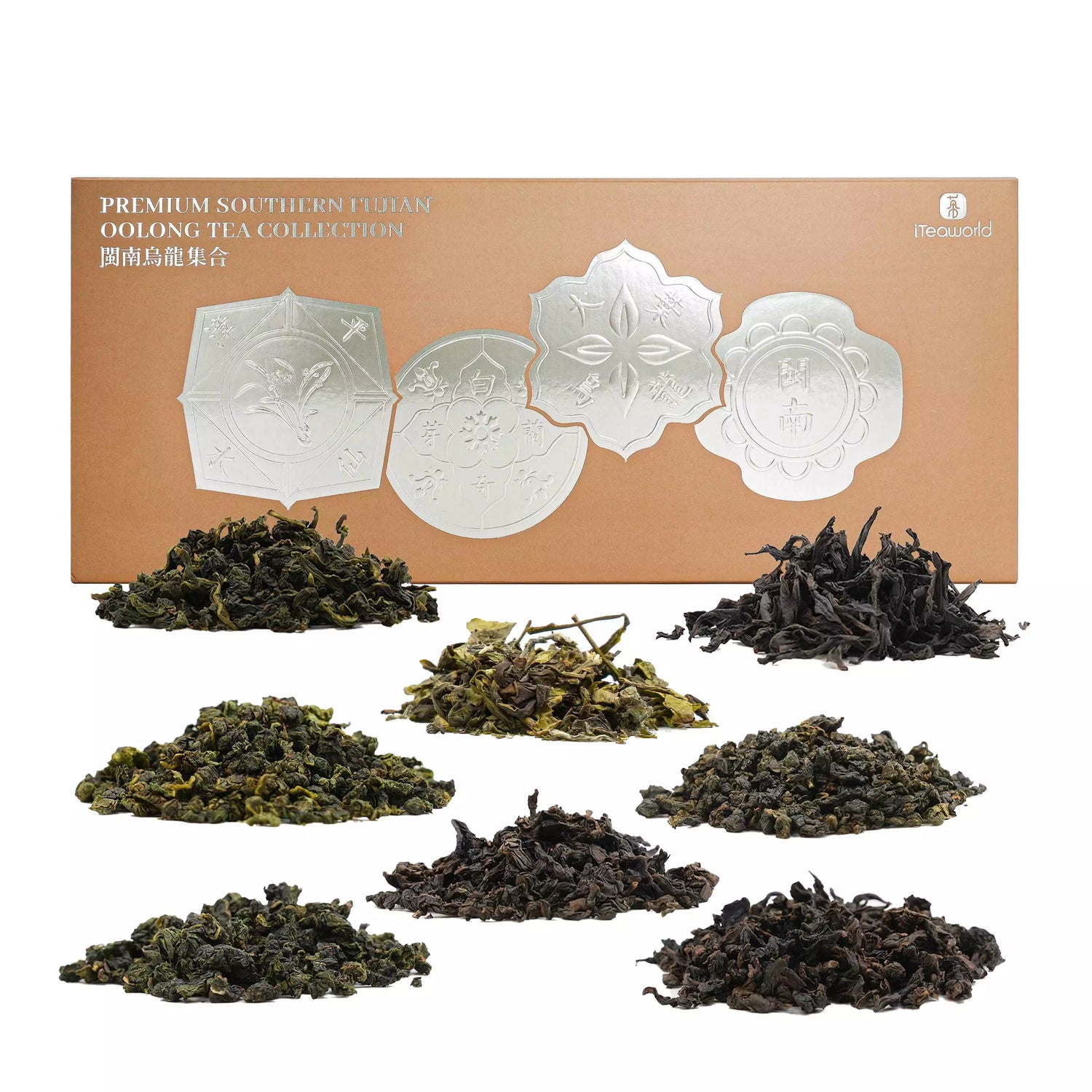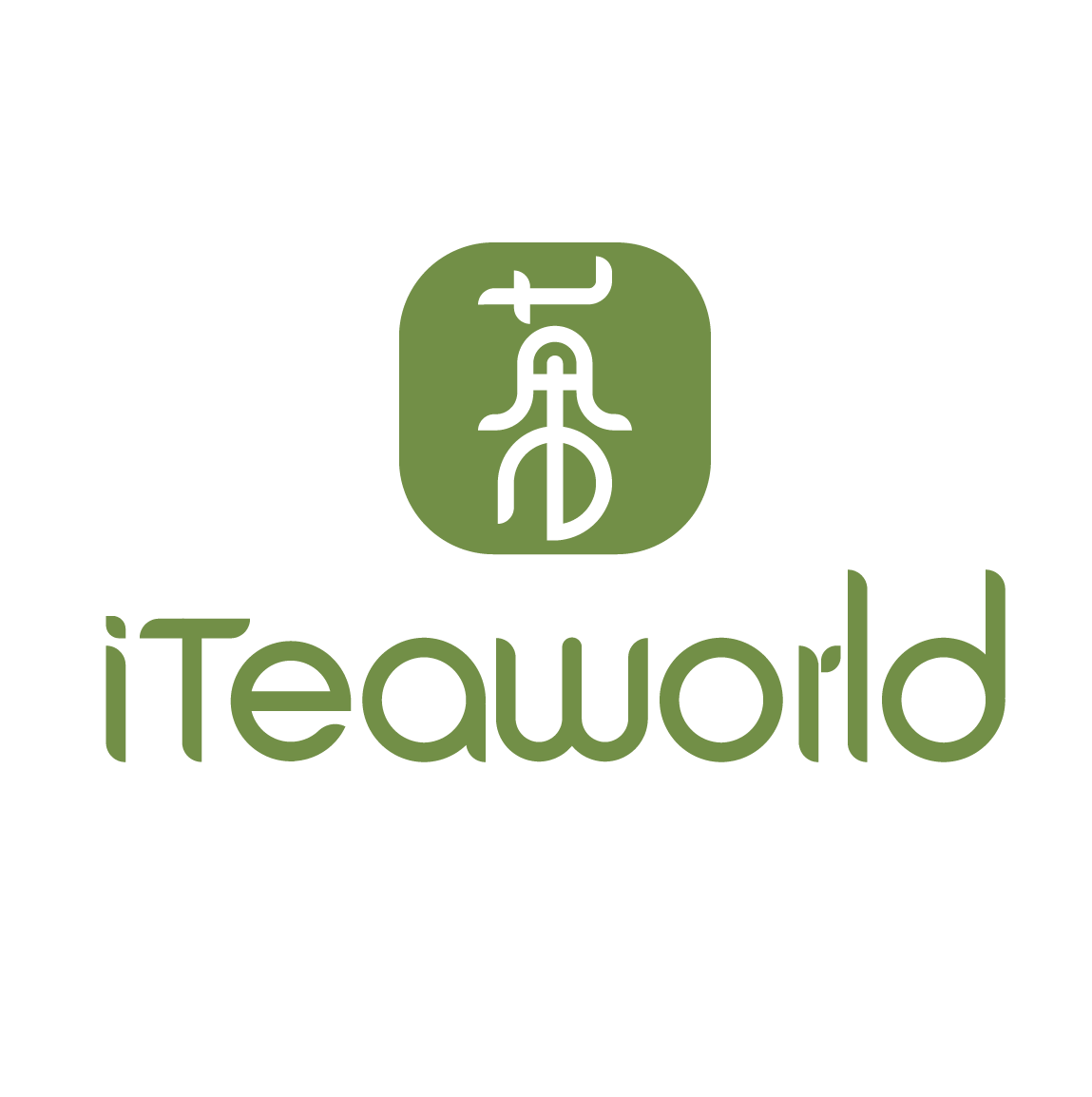30 products
30 products
Sort by:
During the aging and transportation process of aged tea, the packaging and the tea itself may get damaged. Please be cautious when purchasing if you mind this.
Recommended Purchase
This Yongchun Fo Shou Oolong tea, produced in 1993 and naturally aged in dry storage for 33 years, is made from the Yongchun Fo Shou variety, a well-known tea type from Yongchun, Fujian Province. It was crafted by the Yongchun Beikong Overseas Chinese Tea Factory, established in 1917. This tea is handcrafted with traditional full-heat roasting and comes in its original packaging. No longer available on the market, it features a unique "aged aroma", rich sweetness and smooth texture, making it a cherished choice for lovers of aged Oolong tea.
Key Details about 1993 Yongchun Fo Shou
- Origin: Yongchun, Fujian Province, China
- Production Date : 1993
- Grade: Special Grade
- Tea Cultivar: Yongchun Fo Shou
- Craftsmanship : Traditional high-fire roasting with medium fermentation, followed by 33 years of natural dry storage in sealed outer box with an inner foil bag.
- Flavor Highlights: Warm "aged aroma" with notes of roasted nuts, complex layers of aged flavors.
What is Yongchun Fo Shou Oolong Tea?
Yongchun Fo Shou, also known as "Buddha’s Hand," is a premium variety of oolong tea grown in Yongchun, Fujian. Named after its leaves that resemble a Buddha’s hand, Yongchun Fo Shou is celebrated for its fragrant aroma, smooth taste, and exceptional aging potential. The tea is lightly twisted into a "dragonfly head" shape, with dark blackish-brown leaves indicative of traditional craftsmanship.
Brewing and Enjoyment Tips
This tea is a testament to the transformative effects of time, offering a rich, smooth, and slightly tangy flavor profile. Best enjoyed with long steeping times or simmering to fully release its aged characteristics.
Recommended Brewing Methods:
-
Gaiwan Brewing:
- 100ml Gaiwan
- 95℃-100℃
- 5-7 times
- 1:15 to 1:25
- 10~20 seconds
-
Thermos Brewing:
- 1g tea per 100ml (3.4oz) water.
- Use boiling water (212°F).
- Steeping Time: 1-2 hours.
- Tool: Insulated thermos.
-
Boiling Method:
- Add 1g tea per 100ml (3.4oz) water.
- Boil for 1-2 minutes, then let sit for 2-3 minutes.
- Rebrew by boiling 3 minutes longer with each steeping.
- Use a ceramic or glass teapot for optimal flavor.
- Enjoy up to 3-4 brews.
Storage Guidelines
Store this tea in a dry, cool environment with a humidity level below 45% and temperature below 25°C (77°F). Keep it away from strong odors, light, and air exposure. Proper storage ensures the tea retains its flavor and continues to age gracefully over time.
Weight
- 4.4oz (125g)
- Packing Type : Sealed Paper Box with Internal Foil Bag
About Yongchun Beikeng Overseas Chinese Tea Factory
Founded in 1917, the Yongchun Beikeng Tea Factory has a rich history of producing high-quality teas. Once a bustling hub of innovation and craftsmanship, the factory was home to over 1,000 tea workers at its peak, producing millions of pounds of tea annually. Its products, including Yongchun Fo Shou, were highly sought after in Hong Kong, Taiwan, Japan, and Southeast Asia.
Just as many state-owned old factories have experienced ups and downs, in the 1990s, the tea factory once fell into a slump, and the once bustling factory area gradually became desolate. The former factory director, Huang Shenghou, who had created its greatest glory and witnessed its decline, was deeply saddened by its decline and took over the factory himself after privatization.
Today, this aged Yongchun Fo Shou tea stands as a flavorful tribute to the factory's storied past and the enduring legacy of traditional Chinese tea-making.
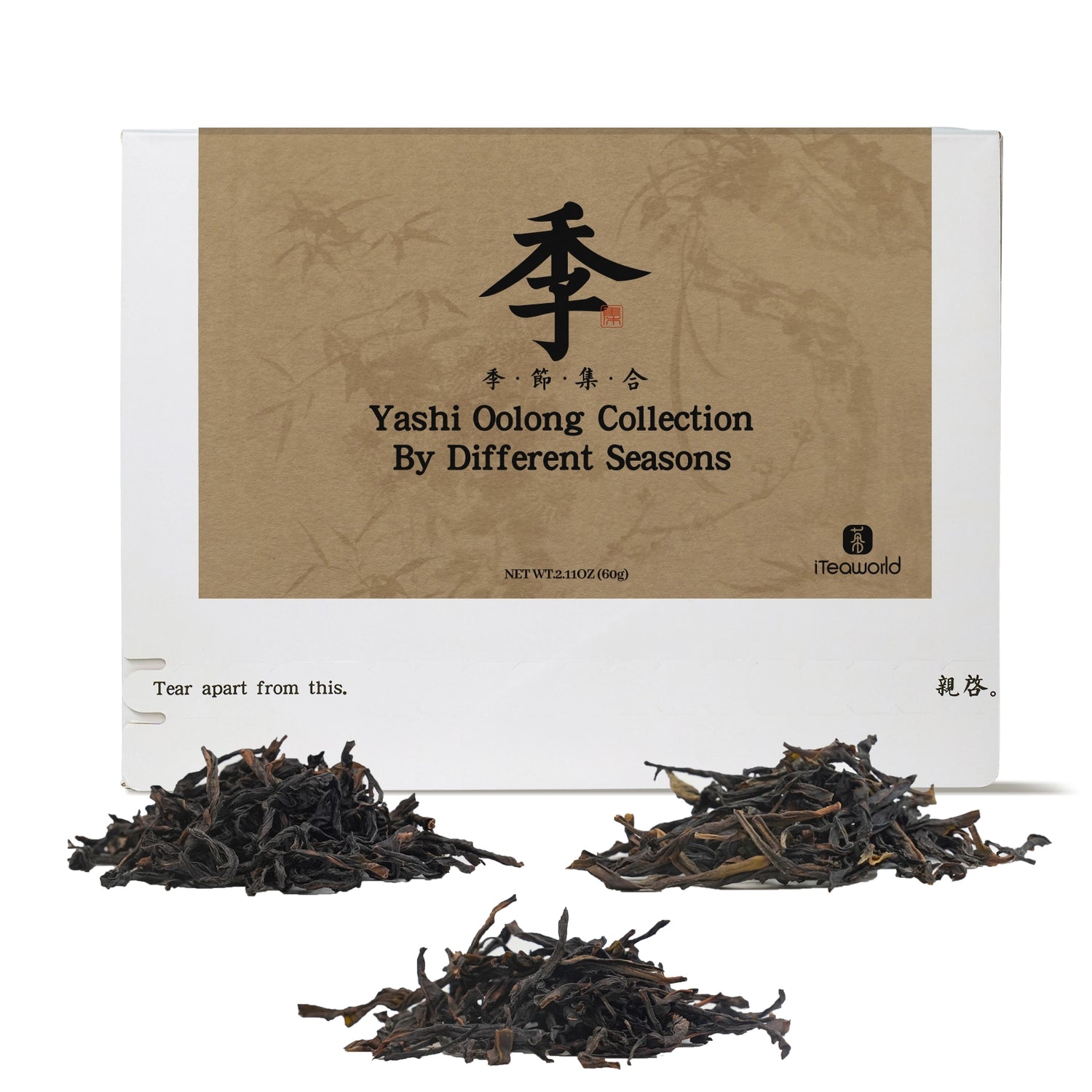

Ya Shi Xiang oolong Comparison Set – Spring, Autumn & Winter Varieties 60g
$19.99
Unit price perYa Shi Xiang oolong Comparison Set – Spring, Autumn & Winter Varieties 60g
$19.99
Unit price perSeasonality of Oolong Tea
Oolong tea can be harvested in all four seasons: spring, summer, autumn, and winter. However, Wuyi rock tea is only harvested in the spring. Oolong teas picked in the midday usually have the most pronounced aroma. Summer teas are mostly used in milk tea and are less common in loose leaf tea markets.
Spring teas tend to grow slower, resulting in higher levels of amino acids and tea polyphenols, with a lower ratio of phenols to amino acids. However, due to the frequent rainy weather in tea-growing areas like Fujian and Guangdong, spring teas may have less aromatic compounds than autumn or winter teas. Therefore, autumn and winter oolongs tend to have a stronger aroma. Winter oolongs, in particular, may even have a crisp, cold-like fragrance. Spring oolongs, on the other hand, tend to be richer in substances, offering a sweeter and fresher taste.
This product features three different seasonal Duck Shit Aroma teas from the same tea master in Hutou Village, Fenghuang Town. The oxidation and roasting levels are different for each, as oolong tea is all about adjusting to the leaves' conditions. Winter leaves are thinner, so oxidation and roasting are usually lighter. Try these three teas to see if you can notice the flavor differences between the seasons.
Products Included:
- Ya Shi Xiang (Duck Shit) Dan Cong Oolong(Spring) 20g
- Ya Shi Xiang (Duck Shit) Dan Cong Oolong(Autumn) 20g
- Ya Shi Xiang (Duck Shit) Dan Cong Oolong(Winter) 20g
Origin:
- Hutou Village, Fenghuang Town, Chaoan District, Chaozhou City, Guangdong Province, China
Master Blender:
- Lin Shupeng
Processing Time:
- November 20, 2024
Best Before Date:
- 36months
Tea Variety:
- Ya Shi Xiang (Duck Shit) Dan Cong variety
Altitude:
- 300-400 meters
Soil Type:
- yellow soil
Oxidation Level:
- Medium oxidation (40-50%)
Roasting Level:
- Spring: Two roasts, medium fire, around 100°C (212°F)
Autumn: Two roasts, medium fire, around 100°C (212°F)
Winter: One roast, light fire, around 80°C (176°F)Very light roast, 70-80°C (158-176°F)
Roasting Method (Charcoal or Electric):
- charcoal briquetting
Brewing Recommendations:
Chinese-Style Oolong Brewing
- Teaware: Gaiwan or clay teapot
- Water Temp: 212°F (100°C)
- Tea-to-Water Ratio: 1g per 0.7 oz (20ml)
- Steep Time: 15 sec (1-3 steeps), add 5-10 sec after
- Re-Steep: Up to 7 times
Western-Style Oolong Brewing
- Teaware: Teapot, infuser, or French press
- Water Temp: 212°F (100°C)
- Tea-to-Water Ratio: 1 tsp (2-3g) per 8 oz (240ml)
- Steep Time: 3-5 minutes
- Re-Steep: Up to 3 times, adding 1minutes each time
Recommended Purchase
This 1993 Aged Min Nan Shui Xian Oolong Tea is crafted from the Shui Xian tea cultivar, grown in Fujian, China. Produced by the renowned Yongchun Beikeng Overseas Chinese Tea Factory, which was established in 1917. This tea has been naturally aged in dry storage for 33 years, developing a unique blend of sweet aged aroma and medicinal fragrance. With a smooth, thick mouthfeel and a lingering sweetness, it is ideal for those who appreciate the depth of aged teas. The traditional high-temperature roasting and medium oxidation enhance its warming characteristics. This product is in its original packaging and is no longer in circulation on the market.
Key Details about 1993 Aged Min Nan Shui Xian
Origin: Yongchun, Fujian Province, China
Production Date: 1993
Grade: Second Grade
Tea Cultivar: Shui Xian
Craftsmanship: Traditional high-fire roasting, medium oxidation, light rolling
Flavor Highlights: Sweet aged aroma with medicinal fragrance, thick and smooth taste, long-lasting aftertaste
Storage: Naturally dry-aged, sealed packaging for optimal preservation
What is Min Nan Shui Xian Oolong Tea?
Min Nan Shui Xian is a Southern Fujian-style Oolong tea, known for its rich fragrance, mellow body, and lasting sweetness. Compared to Wuyi Shui Xian, it undergoes less oxidation, resulting in a softer and smoother profile. After decades of aging, this 1993 batch has developed an aged sweetness, medicinal notes, and a thick, velvety texture, making it a highly sought-after selection among aged tea connoisseurs.
Recommended Brewing Methods:
Gaiwan Brewing:
100ml Gaiwan
95℃-100℃
5-7 times
1:15 to 1:25
10~20 seconds
Thermos Brewing :
1g tea per 100ml (3.4oz) water.
Use boiling water (212°F).
Steeping Time: 1-2 hours.
Tool: Insulated thermos.
Boiling Method :
Add 1g tea per 100ml (3.4oz) water.
Boil for 1-2 minutes, then let sit for 2-3 minutes.
Rebrew by boiling 3 minutes longer with each steeping.
Use a ceramic or glass teapot for optimal flavor.
Enjoy up to 3-4 brews.
Storage Guidelines
Store this tea in a dry, cool environment with a humidity level below 45% and temperature below 25°C (77°F). Keep it away from strong odors, light, and air exposure. Proper storage ensures the tea retains its flavor and continues to age gracefully over time.
Weight & Packaging
Net Weight: 100g (3.5oz)
Packing Type: Original sealed paper box with inner aluminum foil bag
About Yongchun Beikeng Overseas Chinese Tea Factory
Founded in 1917, the Yongchun Beikeng Tea Factory has a rich history of producing high-quality teas. Once a bustling hub of innovation and craftsmanship, the factory was home to over 1,000 tea workers at its peak, producing millions of pounds of tea annually. The factory's products, including Min Nan Shui Xian, were highly sought after in Hong Kong, Taiwan, Japan, and Southeast Asia.
Just as many state-owned old factories have experienced ups and downs, in the 1990s, the tea factory once fell into a slump, and the once bustling factory area gradually became desolate. The former factory director, Huang Shenghou, who had created its greatest glory and witnessed its decline, couldn't bear to see it and took over the factory personally after its privatization.
Today, this aged Min Nan Shui Xian Oolong tea stands as a flavorful tribute to the factory's storied past and the enduring legacy of traditional Chinese tea-making.
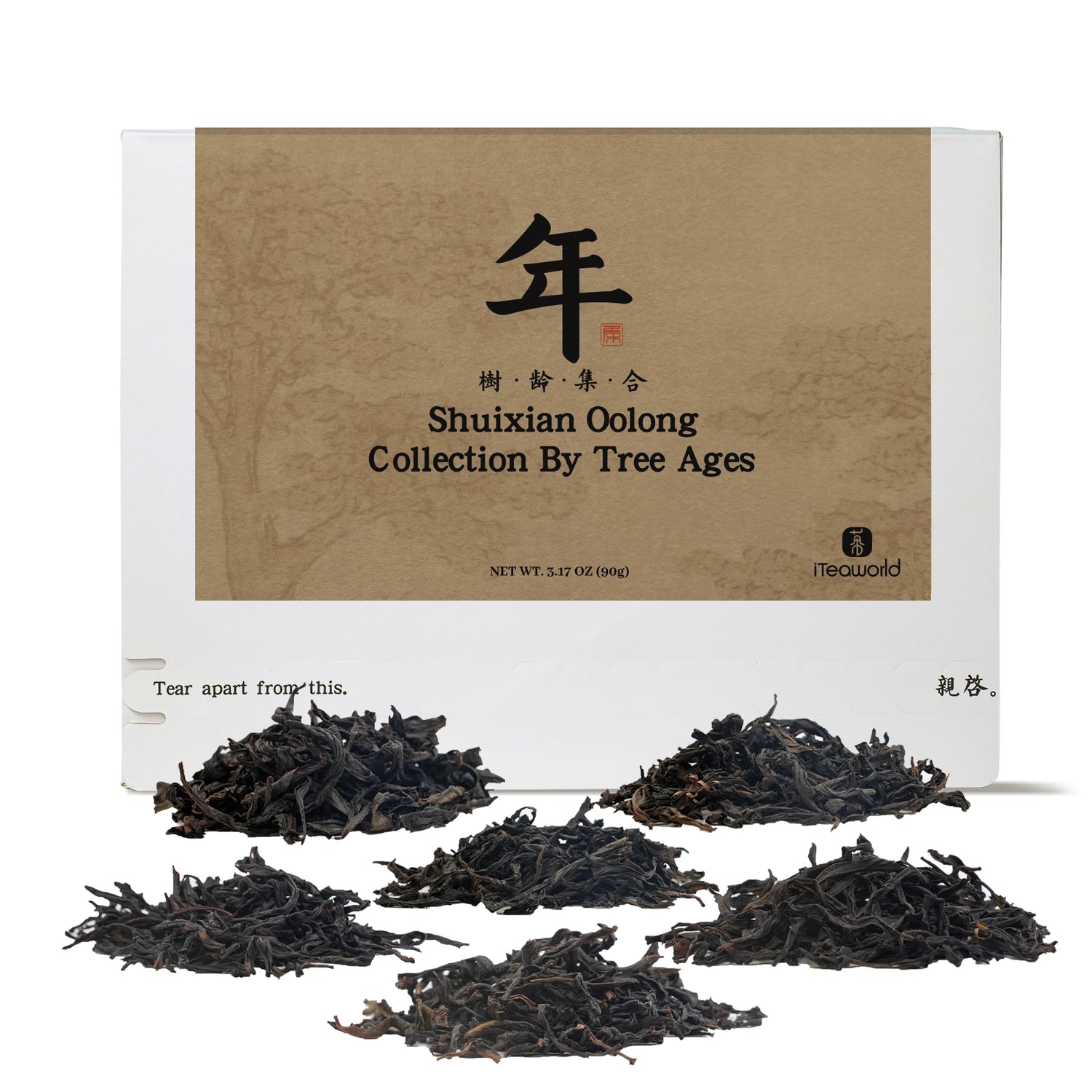
Chinese Oolong Tea Comparison Set: 6 Tree-Aged Blends (Fenghuang & Wuyi Shui Xian)90g
$49.99
Unit price perChinese Oolong Tea Comparison Set: 6 Tree-Aged Blends (Fenghuang & Wuyi Shui Xian)90g
$49.99
Unit price perMaybe You’re Not a Fan of Aged Tea Trees
In both Pu-erh and oolong tea, the age of the tea tree matters. Generally, older trees are rarer, which drives up their price. The age of the trees is most significant in certain oolong varieties, like Shui Xian (including Phoenix Shui Xian, Wuyi Shui Xian, and Minbei Shui Xian).
Typically, younger tea trees contain higher levels of amino acids but lower levels of tea polyphenols and minerals. This results in teas that are sweeter and fresher, but with a lighter, less complex flavor. These teas tend to have more floral notes and are best suited for light fermentation and roasting processes.
On the other hand, older tea trees tend to have higher levels of tea polyphenols, fiber, sugars, and minerals. They’re not as restricted by processing techniques, and the resulting teas are often richer, with more prominent sweetness, a longer-lasting aftertaste, and better endurance for multiple infusions.
This product features Phoenix Shui Xian and Wuyi Shui Xian from the same origin, made with similar processes but from different-aged trees. It’s a great way to compare how tree age influences the flavor of oolong tea.
Products Included:
- Fenghuang Shuixian(Under 30 Years)
- Fenghuang Shuixian(30-70 Years)
- Fenghuang Shuixian(Over 70 Years)
- Wuyi Shuixian (Under 30 Years)
- Wuyi Shuixian (30-70 Years)
- Wuyi Shuixian (Over 70 Years)
Origin:
- Fenghuang Shuixian(Under 30 Years):Shenming Village, Fenghuang Town, Chaoan District, Chaozhou City, Guangdong Province, China
- Fenghuang Shuixian(30-70 Years):Daping Village, Fenghuang Town, Chaoan District, Chaozhou City, Guangdong Province, China
- Fenghuang Shuixian(Over 70 Years):Gezaiwei, Wudong Village, Fenghuang Town, Chaoan District, Chaozhou City, Guangdong Province, China.
- Wuyi Shuixian (Under 30 Years):Jingshui Village, Xingcun Town, Wuyishan City, Fujian Province, China
- Wuyi Shuixian (30-70 Years):Daan Village, Yangzhuang Township, Wuyishan City, Fujian Province
- Wuyi Shuixian (Over 70 Years):Tianxin Village, Wuyi Township, Wuyishan City, Fujian Province
Master Blender:
- Fenghuang Shuixian:Lin Jizhong,林纪中
- Wuyi Shuixian:Chen hui,陈辉
Processing Time:
- Fenghuang Shuixian:Early May 2023
- Wuyi Shuixian:May 2024
Best Before Date:
- 36months
Tea Variety:
- Fenghuang Shuixian variety
- Wuyi Shuixiann variety
Altitude:
- Fenghuang Shuixian(Under 30 Years):760 meters
- Fenghuang Shuixian(30-70 Years):800-90 meters
- Fenghuang Shuixian(Over 70 Years):1150 meters
- Wuyi Shuixian (Under 30 Years):400 meters
- Wuyi Shuixian (30-70 Years):800-900 meters
- Wuyi Shuixian (Over 70 Years):500 meters
Soil Type:
- Fenghuang Shuixian:yellow soil
- Wuyi Shuixian:gravelly soil
Oxidation Level:
- Medium oxidation (40-50%)
Roasting Level:
- Under 30 Years (Option 1): Three roasts, medium-heavy fire (110-115°C / 230-239°F)
- 30-70 Years (Option 1): Three roasts, medium-heavy fire (110-115°C / 230-239°F)
- Over 70 Years (Option 1): Three roasts, medium fire (110-115°C / 230-239°F)
- Under 30 Years (Option 2): Two roasts, heavy fire (110-115°C / 230-239°F)
- 30-70 Years (Option 2): Three roasts, light fire (95-105°C / 203-221°F)
- Over 70 Years (Option 2): Light fire, 95-105°C (203-221°F)
- (Light Fire ~ 80°C, Medium Fire ~ 100°C, Heavy Fire ~ 120°C)
Roasting Method (Charcoal or Electric):
- charcoal briquetting
Brewing Recommendations:
Chinese-Style Oolong Brewing
Teaware: Gaiwan or clay teapot
Water Temp: 212°F (100°C)
Tea-to-Water Ratio: 1g per 0.7 oz (20ml)
Steep Time: 10-15 sec (1-3 steeps), add 5-10 sec after
Re-Steep: Up to 7 times
Western-Style Oolong Brewing
Teaware: Teapot, infuser, or French press
Water Temp: 100°C (212°F)
Tea-to-Water Ratio: 1 tsp (2-3g) per 8 oz (240ml)
Steep Time: 3minutes
Re-Steep: 3 times, adding 1minutes each time
During the aging and transportation process of aged tea, the packaging and the tea itself may get damaged. Please be cautious when purchasing if you mind this.
Recommended Purchase
This 1996 Aged Dancong Shui Xian Oolong Tea is crafted from Shui Xian tea cultivars grown in the famous Wuyi Mountain region of Fujian, China. Produced by the Wuyi Mountain Tea Factory, this tea has been naturally aged in dry storage for 30 years. It is known for its rich, sweet aroma with notes of roasted sweet potato and fruit, and the distinctive floral fragrance of orchids. The tea liquor is a vibrant, deep orange, and the taste is thick, with a noticeable acidity that gives way to a refreshing aftertaste. This product is in its original packaging and is no longer in circulation on the market.This tea is ideal for those who appreciate the complexity of aged Wuyi rock teas and are looking for a bold, full-bodied flavor.
Key Details about 1996 Aged Dancong Shui Xian
- Origin: Wuyi Mountain, Fujian Province, China
- Production Date: 1996
- Grade: Special Grade Dancong
- Tea Cultivar: Shui Xian
- Craftsmanship: Medium roasting, medium oxidation, light rolling
- Flavor Highlights: Sweet aroma with roasted sweet potato, fruit, and floral orchid notes, thick and refreshing taste with acidity
- Storage: Naturally dry-aged, sealed packaging for optimal preservation
What is Dancong Shui Xian Oolong Tea?
Dancong Shui Xian is a type of Wuyi rock tea, known for its intense, complex flavor profile. Shui Xian is one of the most well-known cultivars in Wuyi Mountain and is prized for its unique floral and fruit-like aroma. The tea undergoes a moderate level of oxidation and is roasted to bring out its robust flavor. Aged Shui Xian Oolong offers even deeper complexity, with the floral, fruity notes mellowing into more nuanced, savory characteristics. This makes it a perfect choice for tea connoisseurs who appreciate both freshness and the depth of aged tea.
Brewing and Enjoyment Tips
Aged Shui Xian tea is best enjoyed using Gongfu brewing or boiling methods, which can bring out the full range of aromas and flavors. The tea has excellent durability, so it can withstand multiple brews.
How to Brew 1996 Aged Dancong Shui Xian Oolong Tea
- Gongfu Brewing Method
-
- Tea-to-Water Ratio: 6g tea per 100ml water
- Water Temperature: 95-100°C (203-212°F)
- Steeping Time: 10-15 seconds for the first brew, increase time for each subsequent brew
- Recommended Tool: Porcelain Gaiwan or Yixing Clay Teapot
- Tea-to-Water Ratio: 6g tea per 100ml water
- Boiling Method
- Tea-to-Water Ratio: 3g per 100ml water
- Process: Boil the tea for 3-5 minutes, then simmer for 2-3 minutes
- Rebrewing: Extend boiling time by 2-3 minutes for each subsequent brew
- Recommended Tool: Glass or ceramic teapot
- Tea-to-Water Ratio: 3g per 100ml water
Storage Guidelines for Aged Shui Xian Oolong Tea
To preserve the tea's aging qualities, store it in a cool, dry environment, away from direct light and strong odors. Keep the tea sealed in an airtight container to minimize exposure to air and moisture. Proper storage will allow the tea to continue aging gracefully.
Weight & Packaging
- Net Weight: 125g (4.4oz)
- Packing Type: Original sealed paper box with inner aluminum foil bag
Should You Really Buy High-Altitude Tea? This Product Might Help You Decide
High-altitude tea is grown in regions with big temperature differences between day and night, cooler temperatures, and frequent cloud cover. These conditions slow down the tea’s growth, keeping the leaves tender and rich in amino acids. This results in teas that are naturally sweeter, fresher, and more aromatic. High-altitude teas are perfect for light to medium oxidation and roasting levels. Examples of high-altitude oolongs include Taiwan High Mountain Tea and Phoenix Dan Cong.
Low-altitude teas, on the other hand, generally have higher levels of tea polyphenols, but tend to have a weaker aroma and lower endurance for multiple infusions.
This product features three Duck Shit Oolong teas, all crafted by the same tea master in Fenghuang Town with similar oxidation and roasting levels. The only difference is the altitude where they were grown, making it easy to compare how altitude affects the tea's flavor.
Products Included:
- Ya Shi Xiang (Duck Shit) Dan Cong Oolong (Low-Mountain) 20g
- Ya Shi Xiang (Duck Shit) Dan Cong Oolong (Medium-Mountain) 20g
- Ya Shi Xiang (Duck Shit) Dan Cong Oolong (High-Mountain) 20g
Origin:
- Lower Hill:Hutou Village, Fenghuang Town, Chaozhou City, Guangdong Province, China
- Middle Mountain:Fengxi Reservoir, Fenghuang Town, Chaozhou City, Guangdong Province, China
- High Mountain:Dongjiao Village,Fenghuang Town,Chaoan District,Chaozhou City,Guangdong Province,China
Master Blender:Lin zhiqiang
Processing Time:June 2023
Best Before Date:36 months
Tea Variety:Ya Shi Xiang variety
Altitude:
- Low-Mountain:300-400 meters
- Medium-Mountain:600 meters
- High-Mountain:800-900 meters
Soil Type: yellow soil
Oxidation Level:30-40%
Roasting Level:
- Low-Mountain:Two roasts, medium-light fire (95-105°C / 203-221°F)
1st roast: June-July 2023,2nd roast: After Mid-Autumn Festival 2023 - Medium-Mountain:Two roasts, medium-light fire (95-105°C / 203-221°F)
- High-Mountain: Three roasts, medium-light fire (95-105°C / 203-221°F),1st roast: June-July 2022,2nd roast: After Mid-Autumn Festival 2022,3rd roast: After Chinese New Year 2023
Roasting Method (Charcoal or Electric):charcoal briquetting
Brewing Recommendations:
Chinese-Style Oolong Brewing
Teaware: Gaiwan or clay teapot
Water Temp: 212°F (100°C)
Tea-to-Water Ratio: 1g per 0.7 oz (20ml)
Steep Time: 10-15 sec (1-3 steeps), add 5-10 sec after
Re-Steep: Up to 7 times
Western-Style Oolong Brewing
Teaware: Teapot, infuser, or French press
Water Temp: 190-200°F (88-93°C)
Tea-to-Water Ratio: 1 tsp (2-3g) per 8 oz (240ml)
Steep Time: 3-5 minutes
Re-Steep: Up to 3 times, adding 1-2 minutes each time
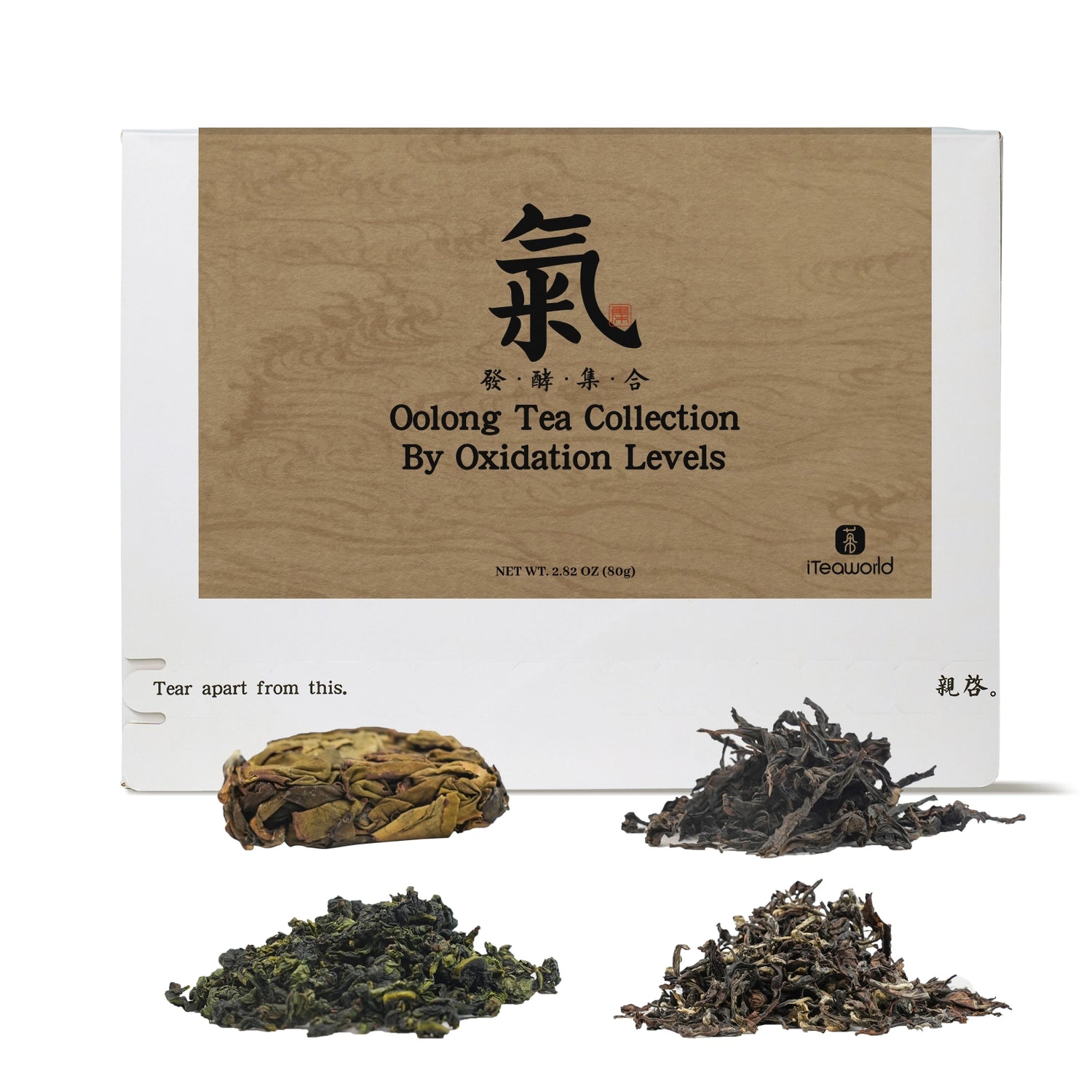
Oolong Tea Comparison Set: 4 Oxidation Levels (Tieguanyin to Oriental Beauty) 80g
$34.99
Unit price perOolong Tea Comparison Set: 4 Oxidation Levels (Tieguanyin to Oriental Beauty) 80g
$34.99
Unit price perOolong Tea: The Balance of Oxidation
Oolong tea is a partially oxidized tea, with oxidation levels ranging from 10% to 70%. Oxidation plays a key role in shaping the tea's aroma and the brightness of its flavor. Light oxidation creates fresh floral and fruity notes, while higher oxidation brings out richer, more mature fruit or honey-like aromas.
Lightly Oxidized Oolong (10%–25%): Examples like Wen Shan Baozhong and light-roast Tieguanyin showcase fresh floral and fruity scents.
Moderately Oxidized Oolong (25%–50%): Teas such as Phoenix Dan Cong and medium-roast Tieguanyin have a balanced profile, combining floral notes with hints of honey, fruit, or roasting, resulting in a complex aroma.
Heavily Oxidized Oolong (50%–70%): Classics like Da Hong Pao, Wuyi Rougui, and Oriental Beauty deliver mature fruit aromas, roasted or caramel-like notes, and a smooth, full-bodied brew.
This product includes four renowned oolong teas, all lightly roasted but with varying oxidation levels. It’s the perfect way to explore how different oxidation levels influence the flavor and aroma of oolong tea.
Products Included:
- Fresh Tieguanyin (Light Oxidation) 20g
- Zhangping Shuixian Oolong Tea (Medium-Light Oxidation) 20g
- Minnan Shuixian (Medium Oxidation) 20g
- Oriental Beauty (Heavy Oxidation) 20g
Origin:
- Fresh Tieguanyin: Longjuan Village, Longjuan Township, Anxi County, Fujian Province, China
- Zhangping Shuixian:Beiliao Village, Nanyang Town, Zhangping City, Fujian Province, China
- Minnan Shuixian:Wuxi Village, Wufeng Town, Yongchun County, Quanzhou City, Fujian Province, China
- Oriental Beauty:Neiyang Village, Pingshan Township, Sanming City, Fujian Province, China
Master Blender:
- Fresh Tieguanyin: Chen Qizhi
- Zhangping Shuixian:He Meiqing
- Minnan Shuixian:Xu Yongyuan
- Oriental Beauty:Li Jianmin
Processing Time:
- Fresh Tieguanyin: November 2024
- Zhangping Shuixian:June 2024
- Minnan Shuixian:December 2024
- Oriental Beauty:early June 2024
Best Before Date:24months
Tea Variety:
- Tieguanyin: Tieguanyin Varieties
- Zhangping Shui Xian: Minnan Shuixian Varieties
- Minnan Shuixian: Jianyang Shui Xian Varieties
- Oriental Beauty: Jin Xuan variety
Altitude:
- Tieguanyin: 800-900 meters
- Zhangping Shui Xian: 400-500 meters
- Minnan Shuixian:900-1000 meters
- Oriental Beauty:1100 meters
Soil Type:
- Tieguanyin: red soil
- Zhangping Shui Xian: yellow and red soil
- Minnan Shuixian: red soil
- Oriental Beauty:Red soil
Oxidation Level:
- Tieguanyin: Light oxidation (10-20%)
- Zhangping Shui Xian: Mild-light oxidation (25-30%)
- Minnan Shuixian: Medium oxidation (40-50%)
- Oriental Beauty:Heavy oxidation (60-70%)
Roasting Level:
- Very light roast, 70-80°C (158-176°F)
Roasting Method (Charcoal or Electric):
- electric roasting
Brewing Recommendations:
Chinese-Style Oolong Brewing
Teaware: Gaiwan or clay teapot
Water Temp: 212°F (100°C)
Tea-to-Water Ratio: 1g per 0.7 oz (20ml)
Steep Time: 10-15 sec (1-3 steeps), add 5-10 sec after
Re-Steep: Up to 7 times
Western-Style Oolong Brewing
Teaware: Teapot, infuser, or French press
Water Temp: 90-100°C (194-212°F)
Tea-to-Water Ratio: 1 tsp (2-3g) per 8 oz (240ml)
Steep Time: 3-5 minutes
Re-Steep: Up to 3 times, adding 1-2 minutes each time
Soil Environment
In The Classic of Tea by Lu Yu, it’s mentioned that tea trees grow best in different types of soils: “the best grow in rotten rocks, the middle in gravelly soil, and the worst in yellow earth.” Soil with rocks provides good drainage and airflow, preventing both waterlogging in heavy rain and dryness during droughts. It’s rich in minerals, and tea trees thrive in soil that’s both moist and acidic. For example, the finest Wuyi rock teas grow in soil made up of rotten rocks and gravel. On the other hand, lower-grade Wuyi teas, which mainly grow in yellow earth, lack the signature rocky flavor and have simpler, less complex aromas and tastes.
If you want to experience how different soil types affect the flavor of oolong tea, the best example would be a collection of Wuyi Rock Teas from various environments. This includes:
Core Zhengyan Wuyi Tea: Known for its rocky, gravelly soil, represented by the famous Three Pits and Two Streams (San Keng Liang Jian).
Wuyi Zhengyan Tea: Grown in soils rich in sandy gravel rocks.
Wuyi Ban Yan Tea: Grown in thicker layers of rocky red soil.
Wuyi Zhou Tea: Grown in soils dominated by loess (yellow earth).
Products Included:
- Core Zhengyan Wuyi Tea(Core Zheng Yan)20g
- Wuyi Rou Gui (Zheng Yan) 20g
- Wuyi Rou Gui (Ban yan Tea) 20g
- Wuyi Rou Gui (Zhou Cha) 20g
Origin:
- Core Zheng Yan:Wuyuan Jian, Tianxin Village, Wuyi Town, Wuyishan City, Fujian Province
- Zheng Yan:Tianxin Village, Wuyi Town, Wuyishan City, Fujian Province
- Ban yan Tea:Jingshui Village, Xingcun Town, Wuyishan City, Fujian Province, China
- Zhou Cha:Xingtian Town, Wuyishan City, Fujian Province, China
Master Blender:
- Chen Hui
Processing Time:
- October 2024
Best Before Date:
- 36 months
Tea Variety:
- Wuyi Cinnamon Varieties
Altitude:
- Core Zheng Yan:342 meters
- Zheng Yan:400-500 meters
- Ban yan Tea:about 400 meters
- Zhou Cha: about 200 meters
Soil Type:
- Core Zheng Yan:Gravel Soil
- Zheng Yan:sandy gravelly soil
- Ban yan Tea:red soil dominated by thickly bedded rock
- Zhou Cha: yellow soil
Oxidation Level:Medium oxidation (45-55%)
Roasting Level:
- Core Zheng Yan:Three roasts, heavy fire, 105-110°C (221-230°F)
- Zheng Yan:Three roasts, heavy fire, 105-110°C (221-230°F)
- Ban yan Tea:Three roasts, heavy fire, 105-110°C (221-230°F)
- Zhou Cha: Two roasts, medium-heavy fire, around 115°C (239°F)
Roasting Method (Charcoal or Electric):
- charcoal briquetting
Brewing Recommendations:
Chinese-Style Oolong Brewing
Teaware: Gaiwan or clay teapot
Water Temp: 212°F (100°C)
Tea-to-Water Ratio: 1g per 0.7 oz (20ml)
Steep Time: 15 sec (1-3 steeps), add 5-10 sec after
Re-Steep: Up to 7 times
Western-Style Oolong Brewing
Teaware: Teapot, infuser, or French press
Water Temp: 212°F (100°C)
Tea-to-Water Ratio: 1 tsp (2-3g) per 8 oz (240ml)
Steep Time: 3 minutes
Re-Steep: 3 times, adding 1 minutes each time
The Art of Roasting Oolong Tea
Roasting oolong tea serves three key purposes: reducing moisture, removing any off-flavors, and lowering caffeine content, all while enhancing the tea's aroma and flavor.Teas with different oxidation levels need different roasting levels. Usually, lightly oxidized teas are lightly roasted to enhance their flavor. If a tea is lightly oxidized but heavily roasted, it can taste too smoky, often because the oxidation wasn’t done properly and the roasting is used to cover it up.
The level of roasting significantly impacts the tea’s aroma and taste. Light roasting preserves the fresh, floral fragrance, while heavy roasting creates a richer, smoother brew with toasty or smoky undertones.
This tea features Wuyi Rougui oolong from the renowned Wuyi Mountains in Fujian, crafted by the same tea master. The only difference lies in the roasting level, offering you an excellent opportunity to explore how roasting shapes the flavors of oolong tea.
Origin:Jingshui Village, Xingcun Town, Wuyishan City, Fujian Province, China
Master Blender:Chen Hui
Processing Time:November 2024
Best Before Date:24 months
Tea Variety:Wuyi Cinnamon
Altitude:about 400 meters
Soil Type:gravelly soil
Oxidation Level:Oxidization 45-55%
Roasting Level:Single Roast: Light roast, 90-100°C (194-212°F)
Triple Roast: Medium roast, 105-115°C (221-239°F)
Triple Roast (Full Fire): Heavy roast, 120-130°C (248-266°F)
Roasting Method (Charcoal or Electric):
Light cinnamon: electric roasting 20g
Medium fire cinnamon: charcoal briquetting 20g
Full Flame Cinnamon: charcoal briquetting 20g
Brewing Recommendations:
Chinese-Style Oolong Brewing
Teaware: Gaiwan or clay teapot
Water Temp: 212°F (100°C)
Tea-to-Water Ratio: 1g per 0.7 oz (20ml)
Steep Time: 10-15 sec (1-3 steeps), add 5-10 sec after
Re-Steep: Up to 7 times
Western-Style Oolong Brewing
Teaware: Teapot, infuser, or French press
Water Temp: 190-200°F (88-93°C)
Tea-to-Water Ratio: 1 tsp (2-3g) per 8 oz (240ml)
Steep Time: 3-5 minutes
Re-Steep: Up to 3 times, adding 1-2 minutes each time
2024 Jasmine Tieguanyin Oolong
Who It’s For:
Light, refreshing, and perfectly balanced, this Jasmine Tieguanyin Oolong is for tea lovers who enjoy subtle floral notes and a creamy, smooth finish. The lightly fermented Tieguanyin tea base is scented three times with fresh jasmine flowers, resulting in a tea that is delicate, buttery, and reminiscent of a serene garden. Best for those seeking a gentle, floral oolong rather than bold or heavy teas.
Tea Details:
Origin: Fangting Village, Huqiu Town, Anxi County, Quanzhou, Fujian
Harvest Date: September 2024
Scenting Rounds: 3 rounds
Tea Base: Fragrant-style Tieguanyin oolong
Tea Cultivar: Tieguanyin
Flavor Profile: Clean and fresh jasmine aroma, silky smooth texture, with a creamy mouthfeel.
What Makes It Special: The perfect marriage of jasmine’s uplifting scent and Tieguanyin’s velvety smoothness, offering a truly luxurious yet refreshing tea experience.
How to Brew
Water Temp: 212°F(or 100℃)
Tea-to-Water: 1g per 20ml
Steep Time: 30 sec for first 3 steeps, add 5 sec each time after
Teaware: White porcelain gaiwan or clay teapot
Re-Steep: 5-7 times
Jasmine Oolong Tea
Authentic Jasmine Oolong is a premium tea that combines the fresh, fragrant notes of Jasmine flowers with the smooth, rich flavor of Oolong tea. The process involves carefully blending freshly bloomed Jasmine flowers with Oolong tea leaves during the drying stage, allowing the tea to absorb the flower's natural fragrance. The more times the tea is scented with Jasmine flowers, the more intense and aromatic the floral notes become. After the scenting process, the tea is dried again to lock in that fresh, vibrant Jasmine aroma.
For the best flavor, Jasmine Oolong is typically made with high-quality, lightly fragrant Tie Guan Yin Oolong tea leaves, harvested during the summer or autumn season. The result is a tea that’s perfectly balanced: the fresh, lively Jasmine fragrance mingles seamlessly with the smooth, creamy taste of Oolong. It’s like stepping into a garden full of blooming Jasmine flowers, where the sweet floral notes and the smooth, sweet tea create a refreshing, comforting experience in every sip.
This Jasmine Oolong tea is perfect for anyone who enjoys a balance of light floral notes with a rich, smooth finish—ideal for any time of day when you're craving something fragrant and refreshing.
2024 Traditional Osmanthus Oolong
Who It’s For:
If you love teas with a deep, layered profile and long-lasting floral notes, this Osmanthus Oolong is a must-try. Crafted with a base of aged aromatic oolong tea and the fragrant blossoms of century-old osmanthus trees, this tea undergoes a meticulous three-round scenting process. The result? A rich, sweet brew where the floral elegance of osmanthus perfectly complements the tea’s mellow depth. Ideal for tea lovers who appreciate traditional crafting methods and unique floral teas. If you’re looking for rare and artisanal tea experiences, this one checks all the boxes.
Tea Details:
Origin: Fangting Village, Huqiu Town, Anxi County, Quanzhou, Fujian
Harvest Date: October 2024
Grade: First Grade (One bud, two leaves)
Tea Base: Aged aromatic oolong tea
Tea Cultivar: Tieguanyin
Tea Master: Chen Qizhi, a 30-year tea artisan
Flavor Profile: Bold and lasting osmanthus aroma, with the sweet, mellow body of aged oolong tea
What Makes It Special: Made with rare century-old osmanthus blossoms and aged oolong, this tea is meticulously scented three times for a truly exquisite experience.
Osmanthus Oolong Tea
Hailing from Anxi in Fujian, the birthplace of Tie Guan Yin Oolong, this Osmanthus Oolong tea is crafted with a unique traditional method that combines the finest Oolong tea leaves with fresh Osmanthus flowers. The process begins with carefully selecting tender Oolong tea leaves, which undergo a series of traditional steps, including withering, shaking to release the aroma (摇青), rolling, and initial drying. After the leaves are partially dried, fresh Osmanthus flowers are added during the final drying stages, allowing the natural floral fragrance to fully infuse into the tea leaves.
The result is a tea that beautifully blends the richness of Oolong with the delicate, sweet aroma of Osmanthus flowers. It combines the smooth, full-bodied taste of black tea with the refreshing, light qualities of green tea, creating a perfect balance of bold and delicate flavors. This Osmanthus Oolong is ideal for anyone who enjoys a complex yet soothing tea with a unique floral twist.
How to brew:
Water Temp: 212°F(or 100℃)
Tea-to-Water: 1g per 20ml
Steep Time: Discard the first steep; 20 sec for 2nd–4th steeps, add 5 sec each time after
Teaware: White porcelain gaiwan or clay teapot
Re-Steep: 5-7 times
The Oolong Tea Sampler comprises four renowned loose-leaf Oolong teas from China: Tie Guan Yin, Minnan Narcissus, Da Hong Pao, and Feng Huang Dan Cong. It provides a comprehensive opportunity to appreciate the disparities among Oolong teas, from their refreshing, floral, honeyed, to fruity aromas. Moreover, you'll delve into the variations in taste brought about by differences in fermentation levels and roasting intensities. Additionally, you'll explore the unique flavors derived from both modern high-mountain tea gardens and ancient tree plantations. This sampler simplifies the process of identifying your preferred Oolong tea variety.
Actual weight: 80g
Introduction:
This Da Hong Pao tea is carefully selected from the autumn harvest of 2023, plucked from high-altitude tea gardens in Wuyi Mountain, Fujian, at elevations exceeding 400 meters. The exceptional growing conditions impart a rich, robust flavor and complex layers of taste. The plucking standard of one bud and two leaves ensures a full-bodied, sweet aftertaste, with a pronounced fruity aroma and a distinct "rock essence" (Yan Yun).
Reasons to Recommend:
- Rich History: With over 700 years of history, Da Hong Pao is regarded as the premier tea among scholars and literati.
- Core Production Area: Grown in the heart of Wuyi Mountain, Fujian, where the average annual temperature ranges from 16°C to 25°C, the frost-free period lasts 253-272 days, and annual rainfall is around 2000 mm. The acidic red soil, rich in organic matter and minerals, contributes to the unique flavor profile of Da Hong Pao tea trees.
- High-Altitude Tea Gardens: This tea is cultivated in high-altitude gardens in Wuyi Mountain, where the superior climate enhances the tea's richness, delivering a fuller, sweeter aftertaste and a more intense, lingering aroma with a pronounced "rock essence."
- Unique Roasting Process: Premium tea leaves are slowly roasted under gentle heat, developing a sweet fragrance with a subtle smoky undertone.
Oxidation Level: 50%-60%
Roasting Level: Full roast
Tea Garden Soil: Yellow soil
Master Blender: [Name of Master Blender, if available]
Processing Time: Autumn 2023
Best Before Date: 36 months
Tea Variety: Da Hong Pao Blend
Introduction:
This Fenghuang Dancong tea is meticulously selected from the autumn harvest of 2023. Plucked from ancient tea trees in high-altitude gardens in Fenghuang Town, Guangdong, at elevations of approximately 850 meters, the exceptional growing conditions impart a refined texture and rich, layered flavors. The plucking standard of one bud and two leaves ensures a smooth, full-bodied taste, combining fruity notes with a roasted aroma that lingers delightfully.
Reasons to Recommend:
- Core Production Area: Grown in Fenghuang Town, Chaozhou, Guangdong, where the mild climate features an average annual temperature of 21.4°C and annual rainfall of 1685.9 mm. The acidic red soil, deep and rich in organic matter and trace elements, plays a crucial role in shaping the tea's distinctive aroma and flavor.
- Tea for Diplomatic Occasions: On April 7, 2023, French President Emmanuel Macron visited Guangzhou and was served Fenghuang Dancong tea during a tea ceremony at the Songyuan Hotel, highlighting its status as a prestigious Guangdong tea.
- Unique Tea Variety: Harvested from ancient tea trees over 100 years old, planted 6-8 meters apart in remote mountainous areas and picked only once a year. This ensures a rich, sweet aftertaste with a slight astringency, characteristic of Fenghuang Dancong.
- Special Processing Techniques: The unique methods of oxidation and medium roasting create a tea with floral and honey-like aromas, setting it apart from others.
Oxidation Level: 30%-40%
Roasting Level: Medium roast
Tea Garden Soil: Yellow soil
Processing Time: Autumn 2024
Best Before Date: 24 months
Tea Variety: Fenghuang Dancong
Introduction:
This Tieguanyin tea is meticulously selected from the finest spring harvest of 2024. Sourced from high-altitude tea gardens in Anxi, Fujian (the most authentic origin), at an elevation of approximately 600 meters, the superior climatic conditions impart a mellow flavor and rich, layered complexity to the tea. The plucking standard of one bud and two leaves ensures a smooth, buttery texture, reminiscent of sipping on a cup of radiant spring blossoms, with orchid-like floral notes and a refreshing, crisp aroma.
Reasons to Recommend:
- A Renowned Chinese Tea: Anxi Tieguanyin, originating around 1725, is one of China's top ten famous teas. On May 22, 2023, Anxi Tieguanyin was awarded the "Globally Important Agricultural Heritage Systems" certificate.
- Authentic Origin: Grown in Anxi, Fujian, where the mountainous terrain and misty climate create an average annual temperature of 15-18°C, a frost-free period of 260-324 days, and annual rainfall of 1700-1900mm. The relative humidity exceeds 78%. The acidic red soil, rich in organic matter and minerals, contributes to the unique flavor profile of Tieguanyin tea trees.
- High-Altitude Tea Gardens: Compared to other Tieguanyin teas, this one is cultivated in high-altitude gardens in Anxi, where the exceptional climate enhances the tea's richness, delivering a smoother, sweeter aftertaste and a more intense aroma.
Oxidation Level: 10%-20%
Roasting Level: Light roast
Tea Garden Soil: Red soil
Processing Time: Spring 2024
Best Before Date: 24 months
Tea Variety: Tieguanyin
Wild oolong tea, produced in Li Jiang Village, Longsheng County, Guilin, Guangxi. Surrounded by mountains on all sides, the region boasts rich organic soil with strong sunlight and frequent rainfall, at an altitude of around 1000 meters. Grown in a pristine ecological environment with abundant vegetation, this wild oolong tea is cultivated without the use of chemical fertilizers and pesticides, resulting in limited yield with only one spring harvest per year. Processed using the techniques of Wuyi rock tea, it offers a rich floral and fruity aroma, with a fragrant infusion and a burst of floral and fruity notes upon tasting. The liquor is bright orange-red, with evident golden rings.
Introduction:
This Qidan Da Hong Pao is meticulously selected from the spring harvest of 2023. Sourced from the purest Wuyi rock tea in Wuyi Mountain, Fujian (the most authentic origin), the exceptional growing conditions and specific cultivar impart a truly authentic flavor profile. Crafted by master tea maker Chen Hai, who has decades of experience, this tea guarantees a rich, sweet aftertaste with a subtle osmanthus fragrance.
Reasons to Recommend:
- Core Production Area: Grown in the heart of Wuyi Mountain, Fujian, where the average annual temperature ranges from 16°C to 25°C, the frost-free period lasts 253-272 days, and annual rainfall is around 2000 mm. The relative humidity is 78%-84%, and the acidic red soil, rich in organic matter and minerals, contributes to the unique flavor of Da Hong Pao tea trees.
- Pure Cultivar: The mother trees of Da Hong Pao grow on the steep cliffs of Jiulongke in the Wuyi Mountain Nature Reserve. Due to their limited yield and exceptional quality, the purebred Da Hong Pao is propagated asexually from cuttings of these mother trees and processed separately.
- High-Altitude Tea Gardens: This tea is cultivated in high-altitude gardens in Wuyi Mountain, where the superior climate enhances the tea's richness, delivering a fuller, sweeter aftertaste and a more intense, lingering aroma with a pronounced "rock essence."
- Unique Roasting Process: Premium tea leaves are slowly roasted under gentle heat, developing a sweet fragrance with a subtle smoky undertone.
Oxidation Level: 45%-55%
Roasting Level: Light to medium roast
Tea Garden Soil: Sandy gravel soil
Master Blender: Chen Hai
Processing Time: Initial processing in May 2024, refined in September 2024
Best Before Date: 36 months
Tea Variety: Qidan
Introduction:
This premium Tieguanyin is meticulously selected from the autumn harvest of 2023. Plucked from high-altitude tea gardens in Anxi, Fujian (the most authentic origin), the exceptional growing conditions impart a rich and robust flavor profile. Carefully crafted in small batches by professional tea farmers, this tea guarantees a smooth, mellow taste with a strong orchid fragrance.
Reasons to Recommend:
- A Renowned Chinese Tea: Anxi Tieguanyin, originating around 1725, is one of China's top ten famous teas. On May 22, 2023, Anxi Tieguanyin was awarded the "Globally Important Agricultural Heritage Systems" certificate.
- Authentic Origin: Grown in Anxi, Fujian, where the mountainous terrain and misty climate create an average annual temperature of 15-18°C, a frost-free period of 260-324 days, and annual rainfall of 1700-1900 mm. The relative humidity exceeds 78%, and the acidic red soil, rich in organic matter and minerals, contributes to the unique flavor of Tieguanyin tea trees.
- High-Altitude Tea Gardens: Compared to other Tieguanyin teas, this one is cultivated in high-altitude gardens in Anxi, where the superior climate enhances the tea's richness, delivering a smoother, sweeter aftertaste and a more intense aroma.
- Meticulous Craftsmanship: Carefully produced in small batches by skilled farmers, this tea undergoes multiple intricate processes to achieve its premium quality.
Oxidation Level: 15%-25%
Roasting Level: Light roast
Tea Garden Soil: Red soil
Processing Time: November 2024
Best Before Date: 36 months
Tea Variety: Tieguanyin
Recommended Purchase :
This Tie Guan Yin Oolong tea, produced between 1990 and 1993, has been stored in a dry warehouse of an old tea factory for over thirty years and kept sealed. It is made from the Tie Guan Yin variety from the famous tea-growing region of Yongchun, Fujian, and was crafted by the state-owned Yongchun Kong Overseas Chinese Tea Factory, established in 1958. This tea is entirely handmade, traditionally roasted over a full fire, and comes in its original packaging. No longer available on the market, its unique "aged aroma," rich sweetness, and smooth texture make it a prized choice for connoisseurs of aged oolong tea.
Key Details about Tieguanyin :
- Production Date:1990-1993
- Grade: First grade
- Tea Cultivar: Tieguanyin
- Craftsmanship: This tea is traditionally roasted with a full fire and moderately oxidized. After over thirty years of natural aging in a dry storage environment, it is sealed in an outer paper box and packaged in an inner kraft paper bag.
- Flavor Highlights: This tea offers a rich, aged aroma with hints of woody notes. The texture is thick and smooth, with a deep, mellow flavor and a long-lasting sweet aftertaste. Its complex profile unfolds in layers, making it a truly refined experience.
What is Tieguanyin Oolong Tea? :
Tieguanyin is one of China's top ten famous teas, a semi-fermented oolong tea primarily produced in Anxi, Fujian. Its unique production process includes sun-withering, shaking, and heating, which gives the leaves a distinctive "green leaf with red edges" appearance. The tea features tightly rolled, sandy-green leaves and a golden, clear brew. It has a rich, lasting aroma with natural orchid or fruity notes, a smooth, refreshing taste, and a sweet aftertaste. Highly resistant to multiple infusions, Tieguanyin is packed with nutrients like polyphenols and amino acids, offering benefits such as boosting alertness, reducing fatigue, cooling the body, and aiding weight loss. A treasured tea and a symbol of Southern Fujian's tea culture, it is widely loved by tea enthusiasts.
Brewing and Enjoyment Tips :
This tea showcases the unique transformation brought by time. The first infusion can be used as a "tea awakening" step to activate the tea's inner qualities, resulting in a richer, smoother texture and a more pronounced sweet aftertaste. For the best experience, we recommend using longer steeping times or boiling methods to fully unlock its aged characteristics.
Recommended Brewing Methods :
-
Gaiwan Brewing
- Capacity:100ml Gaiwan
- Water Temperature:95℃-100℃
- Brewing Times:5-7 times
- Tea Water Ratio:1:15 to 1:25
- Brewing Time Once:10~20 seconds
-
Thermos Brewing
- 1g tea per 100ml (3.4oz) water.
- Use boiling water (212°F).
- Steeping Time: 1-2 hours.
- Tool: Insulated thermos.
-
Boiling Method
- Add 1g tea per 100ml (3.4fl oz) water.
- Boil for 1-2 minutes, then let sit for 2-3 minutes.
- Rebrew by boiling for 3 minutes longer with each steeping.
- Use a ceramic or glass teapot for optimal flavor.
- Enjoy up to 3-4 brews.
Storage Guidelines:
To ensure the best quality of tea, the ideal way to store it is in vacuum-sealed packaging, kept in a cool, dark, and dry place. Avoid exposure to strong odors and air. For sealed storage, using a tin can or a double-lidded metal can is recommended. For even better results, you can store the sealed tea in the refrigerator or a dry storage container.
Weight & Packaging
- Weight:3.5oz (100g)
- Packing Type : Sealed paper box with cowhide bag packaging inside
About Yongchun Beikeng Overseas Chinese Tea Factory:
Established in 1958, the state-owned Fujian Yongchun Beikeng Overseas Chinese Tea Factory carries a rich history and cultural heritage of tea production. At its peak, the factory was a bustling hub of innovation and craftsmanship, employing over 1,000 tea workers and producing millions of pounds of tea annually. Its teas, including Tieguanyin, were exported to Hong Kong, Taiwan, Japan, and Southeast Asia, earning widespread acclaim and becoming a shining symbol of Fujian's tea culture.
However, by the 1990s, the factory fell into decline, and its once-vibrant grounds grew quiet. Unable to bear seeing his life's work fade away, the veteran factory director, Huang Shenghou, took over after its privatization, dedicating himself to reviving the factory and preserving its tea-making legacy.
Today, the factory's aged Tieguanyin not only embodies decades of tea-making expertise but also continues to showcase the timeless charm of Yongchun's Tieguanyin. The story of the Fujian Yongchun Beikeng Overseas Chinese Tea Factory reflects the dedication and innovation of generations of tea artisans, and its aged Tieguanyin carries forward this remarkable legacy.
Recommended Purchase
This Southern Fujian Shui Xian Oolong Tea, produced between 1993 and 1995 and aged for over 30 years in a dry warehouse under sealed conditions, is made from the Shui Xian (Narcissus) varietal sourced from Yongchun, Fujian—the birthplace of this tea. It was jointly produced by Quanzhou Tea Import & Export Company and the State-Owned Yongchun Kong Overseas Chinese Tea Factory in Fujian.
Processed using the Yongchun Shui Xian method, this tea is a classic example of Oolong tea, preserved in its original packaging. It is no longer available on the market. The tea exhibits a distinct aged aroma, accompanied by a subtle medicinal fragrance, with a sweet, mellow flavor and a smooth texture. Its excellent aging results make it a treasured choice for enthusiasts of aged Oolong tea.
Key Details about Southern Fujian Shui Xian
- Origin:Yongchun, Fujian Province, China
- Production Date:1993-1995
- Grade: First grade
- Tea Cultivar:Shui Xian
- Craftsmanship:This tea is processed into oolong tea using the Yong Chun Shui Xian method, with moderate fermentation. It has been naturally aged in a dry storage environment for over 30 years. The tea is packaged in its original sealed cardboard box, with an inner aluminum foil layer for additional protection.
- Flavor Highlights :The tea exhibits a distinct aged aroma, accompanied by a subtle medicinal fragrance. Its flavor is sweet and mellow, with a smooth texture, showcasing excellent aging effects.
What is Southern Fujian Shui Xian Tea?
Southern Fujian Shui Xian Tea originated in Northern Fujian and was introduced to Yong Chun during the Daoguang period of the Qing Dynasty. Over time, its processing techniques evolved by blending the characteristics of Northern and Southern Fujian oolong teas, resulting in a unique method that enhances the tea's durability for multiple infusions, intensifies its orchid-like aroma, and produces a bright yellow liquor with a sweet, mellow, and refreshing flavor. Beyond its exceptional taste, Southern Fujian Shui Xian Tea offers numerous health benefits, such as activating the autonomic nervous system, reducing stress, enhancing energy metabolism, breaking down fats, and lowering cholesterol, making it a cherished choice for both tea enthusiasts and health-conscious individuals.
Brewing and Enjoyment Tips
This tea showcases the unique transformation brought by time. The first infusion can be used as a "tea awakening" step to activate the tea's inner qualities, resulting in a richer, smoother texture and a more pronounced sweet aftertaste. For the best experience, we recommend using longer steeping times or boiling methods to fully unlock its aged characteristics.
Recommended Brewing Methods
Gaiwan Brewing :
- Capacity:110ml Gaiwan
- Water Temperature:100℃
- Brewing Times:5-7 times
- Tea Water Ratio:1:22
- Brewing Time Once:For brewing, begin with a quick rinse (1-2 seconds) and discard the liquid. For the first three infusions, steep the tea for just a few seconds and pour out immediately. After that, gradually extend each subsequent infusion by 5-10 seconds to adapt to the evolving flavor profile.
Storage Guidelines
To ensure the best quality of tea, the ideal way to store it is in vacuum-sealed packaging, kept in a cool, dark, and dry place. Avoid exposure to strong odors and air. For sealed storage, using a tin can or a double-lidded metal can is recommended. For even better results, you can store the sealed tea in the refrigerator or a dry storage container.
Weight & Packaging:
Weight : 4.4oz (125g)
Packing Type : Original paper box sealed packaging, inner aluminum film sealed packaging
About Yongchun Beikeng Overseas Chinese Tea Factory
Established in 1958, the state-owned Fujian Yongchun Beikeng Overseas Chinese Tea Factory carries a rich history and cultural heritage of tea production. At its peak, the factory was a bustling hub of innovation and craftsmanship, employing over 1,000 tea workers and producing millions of pounds of tea annually. Its teas, including Tieguanyin, were exported to Hong Kong, Taiwan, Japan, and Southeast Asia, earning widespread acclaim and becoming a shining symbol of Fujian's tea culture.
However, by the 1990s, the factory fell into decline, and its once-vibrant grounds grew quiet. Unable to bear seeing his life's work fade away, the veteran factory director, Huang Shenghou, took over after its privatization, dedicating himself to reviving the factory and preserving its tea-making legacy.
Today, the factory's aged Tieguanyin not only embodies decades of tea-making expertise but also continues to showcase the timeless charm of Yongchun's Tieguanyin. The story of the Fujian Yongchun Beikeng Overseas Chinese Tea Factory reflects the dedication and innovation of generations of tea artisans, and its aged Tieguanyin carries forward this remarkable legacy.
To explore how aging changes the flavor of tea, we selected five traditionally charcoal-roasted Minnan Shuixian teas from Yongchun Beikeng Overseas Chinese Tea Factory—vintages from 1994, 2004, 2014, 2020, and 2024.
This tasting journey reveals how time transforms the rich character of Shuixian oolong. Let’s experience the evolution together.
This Set Includes:
2024 Minnan Shui Xian (Charcoal-Roasted, Rich Aroma Style)* 20 g
2019 Minnan Shui Xian (Charcoal-Roasted, Rich Aroma Style)* 20 g
2014 Minnan Shui Xian (Charcoal-Roasted, Rich Aroma Style)* 20 g
2004 Minnan Shui Xian (Charcoal-Roasted, Rich Aroma Style)* 20 g
1994 Minnan Shui Xian (Charcoal-Roasted, Rich Aroma Style)* 20 g
Flavor Evolution (For Reference)
2024 (New Tea):
Dominated by natural orchid aroma with a touch of charcoal roast. The fragrance is bright and long-lasting — when brewed with boiling water, the rising steam carries a rich floral note. The tea leaves a clear, lingering aroma in the cup. The taste is full-bodied, smooth, and sweet, with richness but no bitterness. It delivers a strong returning sweetness and a long, lingering finish. The liquor is robust yet not overly stimulating.
5-Year Aged (2020):
Orchid aroma fades, charcoal notes retreat. Hints of ripe fruit begin to emerge, along with a touch of fresh woodiness. A light acidity appears, but the tea still stimulates salivation. The overall taste becomes smoother, though slightly thinner in complexity.
10-Year Aged (2015):
Acidity lessens. Aged notes (like dry wood) blend with faint traces of orchid. The freshness is gone. The liquor becomes silky, and the returning sweetness shifts toward a rock sugar-like softness.
20-Year Aged (2005):
Dominated by aged aromas (sandalwood, herbs). The liquor turns amber, thick and rich like rice soup. The aftertaste is deep with a medicinal undertone.
30-Year Aged (1995):
A complex blend of aged and herbal notes (like ginseng and dried citrus peel). The liquor is thick, smooth, and almost oily. Sweetness is subtle and refined, with a long-lasting aftertaste reminiscent of aged liquor.
How to Brew?
Teaware:
For fresh tea, use a gaiwan or Yixing teapot.
For teas aged 5–10 years, use a Yixing teapot.
For teas aged 20+ years, use an old Yixing teapot or a coarse clay pot for boiling.
Water Temperature:
Fresh tea: 95–100°C
Aged tea: 100°C
Tea-to-Water Ratio:
1g tea per 20 ml of water
Awakening the Tea:
For teas aged 5–10 years: open the bag and let the tea breathe for about 5 minutes before brewing.
For teas aged 20+ years: open the bag and let it air out a day in advance.
Steep Time
Rinse First:
First infusion: quick 3-second rinse, discard — this is to warm up and awaken the tea.
2nd to 4th infusion: 8–15 seconds
From the 5th infusion onward: increase time by 5–10 seconds per brew
For Aged Tea (20+ years):
Can be boiled directly or brewed in a teapot for 10 infusions before boiling.
Who would enjoy this tea?
This collection is perfect for those who have explored the classic Wuyi rock teas and are ready to dive deeper into its rare and distinctive varieties. It includes historically renowned teas like Tie Luohan, Bàn Tiān Yāo, Bai Ji Guan, Shui Jin Gui, and Bai Rui Xiang, along with newer, highly sought-after cultivars like Rui Xiang and Jin Mudan. A journey through the diverse flavors and craftsmanship of Wuyi rock tea.
Product Contains:
Tie Luohan (Iron Arhat)* 3 bags* 5 g
Bai Jiguang (White Cockscomb)* 3 bags* 5 g
Shui Jin Gui (Golden Water Turtle)* 4 bags* 5 g
Bantian Yao (Half-Heaven Goblin)* 3 bags* 5 g
Jin Mudan (Golden Peony)* 4 bags* 5 g
Bairuixiang (Hundred-Fragrance Orchid) * 3 bags* 5 g
Tea Master: Chen Hui 陈辉
Origin: Jingshui Village, Xingcun Town, Wuyishan City, Fujian Province
Processing Time: November 2024
Best Before Date: 36 months
Elevation: 400-600 meters
Soil: Gravel soil
Oxidation: 45-55%
Roast Level: Medium fired
Roasting Method: charcoal roasting
Rare Wuyi Rock Tea Cultivars: Hidden Gems from the Core of Zhengyan
While teas like Da Hong Pao, Rou Gui, and Shui Xian have become well-known representatives of Wuyi Rock Tea, the rare cultivars—such as Tie Luo Han, Bai Ji Guan, Shui Jin Gui, and Ban Tian Yao—tell a deeper, more authentic story. These teas originate from wild, heirloom tea trees that have grown for centuries in the heart of the Wuyi Mountains, shaped by natural selection and careful cultivation. They embody the original genetic heritage of Wuyi rock tea.
Grown on remote cliffs and craggy ledges in the Zhengyan core production zone—places like Guidong Cave and Sanhua Peak—these tea trees sink their roots deep into rocky crevices, drawing in rare minerals. The result is a flavor profile marked by the elusive and unmistakable "Yan Yun" (rock rhyme) that connoisseurs revere.
Each rare cultivar delivers its own singular flavor experience:
Bai Ji Guan offers a light, sweet corn silk aroma.
Tie Luo Han reveals warming, herbal notes reminiscent of angelica root.
Ban Tian Yao stuns with an exotic bouquet of gardenia, milk, and honey—complex and unforgettable.
Their scarcity only adds to their mystique. For example, Ban Tian Yao yields less than 100 pounds annually. Yet despite their low production, these cultivars have a devoted following among seasoned tea drinkers and collectors. One standout, Rui Xiang, is prized as a “secret weapon” in premium blends for its piercing, long-lasting aroma.
These teas are more than just flavor—they’re living cultural heritage.
Bai Ji Guan has Taoist roots.
Shui Jin Gui is tied to legends of a golden tortoise seeking justice.
Tie Luo Han was once a top export to Southeast Asia.
In an age of mass production and standardized flavor, these rare Wuyi cultivars offer a bold alternative: complexity, character, and a deep connection to terroir. Their resilience—thriving in shade and drought—also holds promise for future tea breeding.
As local tea farmers say, “Rou Gui represents today, but the rare cultivars lead us into tomorrow.” Exploring them is like reading a living encyclopedia of Wuyi Rock Tea—each sip a page from nature’s own archive.
How to brew these teas?
-
Core Principles
Teaware: Use a porcelain gaiwan (best for aroma) or Yixing clay teapot (enhances richness).
Water: Filtered or spring water (avoid hard water). Temperature: Boiling (100°C/212°F) for medium/heavy roasted teas; 90-95°C (194-203°F) for light roasted teas.
Ratio: 1:20 tea-to-water (e.g., 5g/3.8oz tea for 110ml/3.8oz water). -
Brewing Steps
Warm the Teaware: Rinse cups and teapot with hot water to unlock aromas.
First Rinse: Pour boiling water over leaves and discard immediately (awakens tea).
Brewing:
Short Steeps: Start with 5-10 seconds for the first 3 infusions.
Gradually Increase: Add 5-10 seconds per subsequent steep.
Avoid Oversteeping: Prevents bitterness.
Pro Tips for Westerners
Flavor Clues:
"Rock Essence" (Yan Yun): A mineral aftertaste like wet stones—sign of quality
Cold Cup Test: Smell the empty cup after sipping. True Wuyi teas retain alpine herb/plum notes
Fix Bitterness: Reduce steeping time or use cooler water (88-90°C).
Pairings: Dark chocolate (for heavy roasts) or lemon tart (for light roasts).
A semi-fermented oolong tea grown in the rocky crevices of Fujian’s Wuyi Mountain, renowned for its unique "rock bone floral aroma" (Yan Yun). Only tea cultivated within Wuyi City’s protected region can bear this name. Other areas (e.g., Anxi) do not produce Rock Tea.
This collection features the three most iconic Wuyi rock teas—Da Hong Pao, Shuixian, and Rougui—along with their key variations. You’ll taste the difference between blended and purebred Da Hong Pao, young and old Shuixian trees, and core vs. semi-core Rougui. A guided journey into the depth and complexity of Wuyi rock tea.
How to Start with Wuyi Rock Tea?
For newcomers, we recommend starting with Blended Da Hong Pao, Shuixian, and Rougui—classic, accessible, and well-balanced teas that offer a great introduction to Wuyi Rock Tea.
Blended Da Hong Pao – The most famous Wuyi Rock Tea, blended for a harmonious taste of rock minerality, floral-fruity notes, and roasted depth. The perfect benchmark for beginners.
Shuixian – Smooth and mellow with woody sweetness and a lingering finish. Ideal for those who prefer a rich, rounded texture.
Rougui – Spicy cinnamon aroma with a bold, warming character. A great choice for adventurous palates.
Why start with these?
Easy to find – Widely available & consistent in quality.
Affordable – Great value for authentic Wuyi Rock Tea.
Versatile – Covers the core flavor profiles of "Yan Yun" (rock essence)。
Product Contains:
Traditional Blend Dahongpao* 3 bags* 5 g
Qidan Purebred Dahongpao*3 bags* 5 g
Queshe Purebred Dahongpao* 3 bags* 5 g
New Growth Wuyi Shuixian* 3 bags* 5 g
Aged Tree Wuyi Shuixian*3 bags* 5 g
BanYan Wuyi Rougui* 3 bags* 5 g
ZhengYan Wuyi Rougui* 2 bags* 5 g
Tea Master: Chen Hui 陈辉
Origin: Jingshui Village, Xingcun Town, Wuyishan City, Fujian Province
Processing Time: November 2024
Best Before Date: 36 months
Elevation: 400-600 meters
Soil: Gravel soil
Oxidation: 45-55%
Roast Level: Medium fired
Roasting Method: charcoal roasting
How to Brew Wuyi Rock Tea?
Water: Use filtered or spring water (avoid hard water).
Teaware: Yixing clay teapot for medium-high roast; porcelain gaiwan for lighter roast.
Awakening: Aged tea: dry wake for 1 hour; new tea: optional.
Temperature: 95–100°C (203–212°F).
Tea-to-Water Ratio: 5g per 90–100ml (1:20).
Steeping: First 3 infusions: 5–10 sec; increase by 5–10 sec after. 8–10 infusions total.
Aged Shui Xian: First steep 20 sec to enhance aroma.
Tips:
Light roast (Que She, new Shui Xian): Avoid prolonged high heat.
Full roast (Beidou, aged tea): Use boiling water to activate flavors.
Boiling water for bold teas (Rou Gui, Beidou): lower temp for delicate teas (Que She, new Shui Xian).
This product is a pre-sale item and is expected to ship in August.
Please take note before placing your order.
A Journey of Fire and Technology
"For centuries, Chinese oolong tea masters have debated: the slow dance of charcoal fire or the precision of electric heat? This kit invites you to explore two roasting philosophies through Phoenix Dancong and Wuyi Rock Tea – one shaped by ancestral wisdom, the other refined by technology."
Product Contains:
Charcoal-Roasted Wuyi Rougui* 20 g
Electric-Roasted Wuyi Rougui* 20 g
Charcoal-Roasted Mi Lan Xiang Dancong* 20 g
Electric-Roasted Mi Lan Xiang Dancong* 20 g
Product Information (Wuyi Rougui)
Type: Semi-Rock (Ban Yan)
Origin: Jingshui Village, Xingcun Town, Wuyishan City, Fujian Province, China
Altitude: 400m
Producer: Chen Hui
Processing Timeline: Maocha: April 2024; Initial Roasting: August 2024; Final Roasting: November 2024
Product Information (Mi Lan Xiang Dancong)
Origin: Fengxi Village, Fenghuang Town, Chaozhou City, Guangdong Province, China
Altitude: 600–800m
Tree Age: ~30 years
Producer: Lin Zhiqiang
Processing Timeline: Maocha: April 2024; Initial Roasting: August 2024; Final Roasting: November 2024
Charcoal Roasting: The Art of Traditional Oolong
Charcoal roasting is the soul of traditional oolong tea. Using slow, low heat from wood like longan or lychee, it transforms the leaves, creating a rich flavor profile with caramel sweetness, mineral notes, and a smoky depth.
This method is perfect for Wuyi Rock Tea and Phoenix Dancong, turning grassy flavors into smooth, complex profiles and bringing out caramel and fruit-like sweetness.
Compared to modern electric roasting, charcoal roasting offers:
Better texture — glossy dark brown leaves vs. greenish-brown
Richer aromas — smoky and natural tea fragrances vs. a single roasted flavor
More infusions — over 8 brews vs. 5
Longer shelf life — improves over 5+ years vs. needing to be consumed within the year
Despite challenges like higher carbon emissions, charcoal roasting is essential for high-end oolong, much like oak barrels for fine wine. It elevates tea from "fresh leaves" to a living, evolving art.
Electric Roasting: The Modern Approach to Oolong Tea
Electric roasting is a key technique in modern oolong tea production, offering significant advantages in efficiency and consistency. Using electric heating elements, the temperature is precisely controlled between 70-130°C, with roasting time typically ranging from 2-5 hours. This process improves production speed compared to traditional charcoal roasting.
One of the standout features of electric roasting is its digital temperature control, maintaining a stable temperature within ±5°C. This eliminates the uneven heat fluctuations common in charcoal roasting, making it ideal for light-fermented oolongs that preserve fresh floral and fruity aromas.
In terms of flavor, electric-roasted teas shine with vibrant floral notes and a refreshing taste. The tea is clear and bright in color. While it lacks the rich depth of charcoal-roasted teas, it meets the demand for light, refreshing tea that modern consumers crave.
How to Brew?
Teaware: Yixing teapot (preferably zhuni clay) or thick-walled gaiwan
Water Quality: Spring water or soft water (hardness < 50 mg/L)
Tea-to-Water Ratio: 5g tea / 100ml water
Water Temperature: 100°C (boiling)
Rinse: Quick rinse with boiling water (under 5 seconds); discard the first infusion
Steeping Times:
Infusions 1–3: 15 seconds each
Infusions 4–10: Mi Lan Xiang: increase by 5 seconds per infusion
Wuyi Rougui: increase by 5–10 seconds per infusion
The production of Oolong tea in the Southern Fujian region dates back to the 17th century, with a wide variety of Oolong teas. Among them, the famous Tie Guan Yin and Zhangping Shui Xian have been officially recognized as part of China’s Intangible Cultural Heritage.
This curated collection showcases oolong varieties discovered and cultivated in Southern Fujian, offering a glimpse into its evolving tea history and distinct flavor profiles. Whether you’re a seasoned tea drinker or a curious explorer, this selection lets you experience the true essence of Southern Fujian oolong.
The selection includes:
Qingxiang Tieguanyin (Light Aroma Tieguanyin)* 3 bags* 5 g
Nongxiang Tieguanyin (Strong Aroma Tieguanyin) * 3 bags* 5 g
Qingxiang Huangjingui (Light Aroma Huangjingui)* 3 bags* 5 g
Zhangping Shuixian (Pressed Shuixian from Zhangping)* 3 bags* 5 g
Yongchun Fo Shou (Yongchun Buddha’s Hand, Fruity Aroma)* 2 bags* 5 g
Qingxiang Baiya Qilan (Light Aroma Baiya Qilan)* 2 bags* 5 g
Nongxiang Meizhan (Strong Aroma Meizhan)* 2 bags* 5 g
Qingxiang Daye Oolong (Light Aroma Big Leaf Oolong)* 2 bags* 5 g
Processing Time: May 2024
Best Before Date: 36 months
Southern Fujian (Minnan)Oolong Tea: A Flavor for Every Era
1. Origins (Kangxi Period, Qing Dynasty)
Anxi is the birthplace of Minnan Oolong tea. During the Qing Dynasty's Kangxi period, a Yongchun monk grafted Anxi tea plants with native citron trees, creating the unique Yongchun Fo Shou tea, known for its distinctive fruity aroma and mineral depth.
2. Golden Age (from Qianlong to Xianfeng Periods, Qing Dynasty)
In the 18th century, Minnan Oolong entered its golden age. Wang Shiran from Anxi discovered a rare tea tree and made tea from it, which was presented to Emperor Qianlong. The tea was named Tie Guan Yin, due to its "iron-like weight" and "Guanyin-like shape." With its bold flavor and growing demand in Southeast Asia, it became a major export tea.
In the Xianfeng period, Anxi tea farmers selected and cultivated the Huang Jin Gui. Known for its osmanthus-like fragrance, it became a symbol of Minnan’s high-aroma Oolong teas.
3. Transformation (Late 19th to Early 20th Century)
To meet the needs of overseas markets, Minnan tea farmers developed Mei Zhan and Da Ye Oolong. Meanwhile, Zhangping Shui Xian evolved its unique "square tea cake" shape, becoming the only compressed Oolong tea.
Mei Zhan: Noted for fruity sweetness and strong infusions
Da Ye Oolong: Known for its thick texture and caramel notes, great for blending
Zhangping Shui Xian: Complex fragrance with intertwined orchid and osmanthus notes, smooth and refreshing taste.
4. Innovation (Beginning of the 20th century)
As technology advanced, Minnan Oolong entered a new era. In the 1980s, Pinghe County discovered Bai Ya Qi Lan, celebrated for its crisp orchid aroma.
Unique Crafting Characteristics:
- The fermentation level is typically between 10% and 25%, making it a lightly fermented Oolong tea.
- The repeated rolling and wrapping for the Shaping process is a key feature that distinguishes Minnan Oolong from other Oolong teas, shaping its unique appearance.
- Multiple rounds of slow roasting at low heat are used to enhance the tea's aroma.
- The leaves undergo multiple cycles of shaking and resting to achieve the perfect balance of "three reds and seven greens" in the leaf base.
How to Brew Minnan Oolong?
1. Choose the Right Teaware
White porcelain gaiwan – Best for lightly oxidized, lightly roasted oolongs, as it preserves delicate floral notes.
Yixing clay teapot – Ideal for richer, heavily roasted or charcoal-roasted oolongs, enhancing depth and smoothness.
2. Water Temperature Matters
Use boiling water (100°C / 212°F) for full aroma and body.
Water below 90°C (194°F) results in weaker flavor and muted fragrance.
3. Tea-to-Water Ratio
7–8g of tea for a 110ml gaiwan (about ⅓ full).
Standard ratio: 1:15 (tea to water)—adjust based on preference.
4. Use the Right Water
Soft, slightly alkaline spring water or purified water is best.
Avoid tap water with high mineral content, as it can mute the tea’s natural flavors.
5. Preheat Your Teaware
Rinse the gaiwan and cups with boiling water before brewing.
This warms the vessels and prevents temperature shock, allowing the aroma to bloom fully.
6. Wake Up the Tea (Rinse Infusion)
Pour boiling water over the leaves and immediately discard (within 10 seconds).
This removes any impurities and "wakes up" the leaves for optimal flavor release.
7. Proper Pouring Technique
Pour water gently along the inner wall of the gaiwan.
This helps the leaves unfurl evenly and enhances the fragrance.
8. First Infusion Timing
7–15 seconds for the first steep:
Lightly roasted teas need a shorter steep.
Heavily roasted teas can steep slightly longer.
9. Subsequent Infusions
Increase steep time by 5–10 seconds per infusion.
High-quality oolong can last 7–10 brews, with longer-lasting flavor in premium-grade teas.
10. Drain Completely Between Steeps
Always pour out all the liquid after each infusion.
This prevents oversteeping, which can lead to bitterness or astringency in later brews.

Guangdong Oolong Tea Collection: 6 Historical Flavors for Tea Lovers 100g
$49.99
Unit price perGuangdong Oolong Tea Collection: 6 Historical Flavors for Tea Lovers 100g
$49.99
Unit price perIn Guangdong, tea drinking has long been a part of daily life. With a rich history of tea cultivation, the region has developed a deep-rooted tea culture and a diverse range of Oolong teas with distinctive craftsmanship and flavors. This collection traces the footsteps of Guangdong Oolong through history, gathering the most iconic teas from ancient traditions to modern favorites. We hope this product allows you to experience the unique charm of Guangdong Oolong tea.
The product includes:
Fenghuang Lancai Oolong* 3 bags* 5 g
Shiguping Oolong* 3 bags* 5 g
Fenghuang Dancong Honey Orchid (Mi Lan Xiang)* 4 bags* 5 g
Ya Shi Xiang Dancong* 3 bags* 5 g
Lingtou Dancong* 4 bags* 5 g
Xiyan Oolong* 3 bags* 5 g
Processing Time: November 2024
Best Before Date: 36 months
What Makes Guangdong Oolong Tea So Special?
1. A Long and Rich History
Guangdong’s tea-making traditions date back as early as the Song Dynasty. By the late Ming and early Qing periods, Oolong tea processing techniques were introduced to Guangdong, marking the beginning of its unique Guangdong Oolong tea history.
- Initially, Fenghuang shuixian and Shiguping Oolong were respectively made from the mother plant of Guangdong Oolong Tea (Fenghuang shuixian group species) and the small-leaf shrub tea trees cultivated in the She ethnic village.
- In the early 20th century, premium cultivars like Mi Lan Xiang (Honey Orchid Aroma) and Ya Shi Xiang (Duck Shit Aroma) were selected from the Fenghuang Shui Xian group spcies.
- In 1962, Lingtou Dancong was created in Lingtou Village, Raoping Town, Chaozhou, using a natural mutation of the Fenghuang Shui Xian group species known for its pronounced honey fragrance.
- In the 1970s, Xiyan Oolong emerged in the Xiyan Mountain region of Meizhou, combining Lingtou Dancong and Qilan cultivars to create a tea known for its high-mountain aroma.
2. Unique Craftsmanship
- High-quality fresh leaves are handpicked from single tea trees and processed individually.
- The fixation step uses a high-temperature, rapid method to lock in the tea’s fresh aroma and active compounds.
- The shaking process emphasizes evenness and multiple rounds to enhance the transformation of aromatic substances.
- Extended light fermentation develops a fuller, more transparent floral fragrance.
- Roasting is typically done at medium levels or low levels, with adjustments based on the tea’s aroma type and cultivar. The goal is to preserve the fresh aroma while adding body to the tea liquor. Roasting is carried out gradually in stages, avoiding damage to the aroma from sudden high heat.
How to brew?
Teaware: 110ml Gaiwan or Yixing Clay Teapot
Preheat all teaware with boiling water to enhance aroma.
Water Temp: 212°F (100°C)
Tea-to-Water Ratio: 5g per session
Steeping Time: 1–3 infusions: 15 sec
Later infusions: Add 5–10 sec
Total brews: 7–10 times
Water Quality: Spring or mineral water preferred
Pouring Tips:
High pour to awaken the aroma
Fixed-point pour for even extraction
Quick pour-out to prevent bitterness
Fully drain each brew for the best taste
Discover the World of Chinese Oolong Tea
This collection carefully selects 10 of the most popular and renowned Chinese Oolong teas, offering you a journey through the diverse flavors of Oolong.
It features everything from lightly oxidized Tie Guan Yin to heavily oxidized Oriental Beauty, and from the delicate aroma of Oolong to the rich floral fragrance of Jasmine Oolong.
Crafted with authentic techniques and flavors, this product is an excellent choice for beginners to explore famous Chinese Oolong teas in a low-cost and diverse way.
Why is this product the best choice for beginners?
1. Strict Tea Selection Standards
All teas are sourced from their original growing regions and crafted by tea masters with 20–30 years of experience.
We use only whole tea leaves-no stems-and all teas are freshly produced in November 2024.
They are suitable for multiple infusions and offer great value.
2. Various flavors and representatives
Our teas not only offer premium quality, but also embody the unique terroir and culture of China’s major Oolong-producing regions.
Each tea has its distinctive aroma and taste, helping you discover the style that suits you best.
3. Convenient, Compressed Mini-Cake Design
The teas are pressed into portable small cakes, making them easy to brew with both traditional Chinese gaiwans and Western-style teapots.
The product includes:
Light Aroma Tie Guan Yin Oolong Tea* 2 bags* 5 g
Strong Aroma Tie Guan Yin Oolong Tea* 2 bags* 5 g
Phoenix Dan Cong (Honey Orchid) Oolong Tea* 2 bags* 5 g
Phoenix Dan Cong (Ya Shi Xiang) Oolong Tea* 2 bags* 5 g
Wuyi Da Hong Pao Oolong Tea* 2 bags* 5 g
Wuyi Rou Gui Oolong Tea* 2 bags* 5 g
Wuyi Shui Xian Oolong Tea* 2 bags* 5 g
Jasmine Oolong Tea* 2 bags* 5 g
Osmanthus Oolong Tea* 2 bags* 5 g
Oriental Beauty Oolong Tea* 2 bags* 5 g
How to brew?
1. Chinese-Style Oolong Brewing
Teaware: Gaiwan or clay teapot
Water Temp: 212°F (100°C)
Tea-to-Water Ratio: 1g per 0.7 oz (20ml)
Steep Time: 15 sec (1-3 steeps), add 5-10 sec after
Re-Steep: Up to 7 times
2. Western-Style Oolong Brewing
Teaware: Teapot, infuser, or French press
Water Temp: 90-100°C (194-212°F)
Tea-to-Water Ratio: 1 tsp (2-3g) per 8 oz (240ml)
Steep Time: 3-5 minutes
Re-Steep: Up to 3 times, adding 1-2 minutes each time
FAQs
Exploring different Chinese oolong teas, especially loose leaf teas, allows you to discover different flavors and aromas. Experimenting with different oxidation levels and origins can help you find the perfect oolong tea for your taste.
We strongly recommend you start with Tea Sampler,
We provide two Oolong Tea Samplers. The teas in them are both Chinese tea and whole leaf tea.
One is the entry-level Oolong Tea Sampler, which is relatively low-priced at $19.99.
One is the connoisseur grade Oolong Tea Sampler, the oolong tea in it is of better quality. $39.99
There are many different varieties of oolong tea, such as Tieguanyin and Da Hong Pao. Each tea has its own criteria for evaluation. For example, the best Da Hong Pao usually comes from tea leaves closer to Wuyi Mountain, and it also depends on the grade and processing technique of the tea leaves. Therefore, you need to have enough professional knowledge to find the best oolong tea. Of course, there are also some simple judgment methods, such as: 1. You can judge according to the price. Generally speaking, the quality of tea leaves is proportional to the price. 2. You can see whether the tea leaves are from the core producing area, the picking standard of the tea leaves, and the height of the tea garden. The picking standard of tea leaves in the core producing area is usually one bud and one leaf or one bud and two leaves, and the high mountain tea is usually better. Of course, the final judgment still needs comprehensive consideration.
Oolong tea has several health benefits, including:
Lowering blood pressure: The tea polyphenols and caffeine in oolong tea can help lower blood pressure, preventing the occurrence of hypertension and cardiovascular diseases.
Refreshing and awakening: The caffeine in oolong tea can help refresh and awaken, enhancing attention and memory.
Promoting digestion: Oolong tea contains rich dietary fiber, which can help promote intestinal peristalsis and prevent constipation and indigestion.
Weight loss: The tea polyphenols in oolong tea can help accelerate fat metabolism, promote fat burning, and aid in weight loss.
Antibacterial and anti-inflammatory: Oolong tea contains some components with antibacterial and anti-inflammatory effects, which can help prevent infections and inflammation.
To brew the best oolong tea, start by using high-quality loose leaf oolong tea. Use hot water at around 190°F (88°C) and steep the tea for 2-3 minutes. Adjust the steeping time based on your taste preference.



